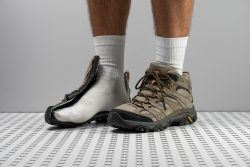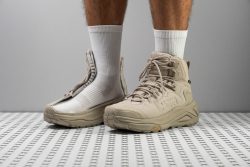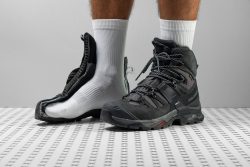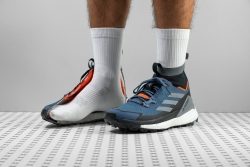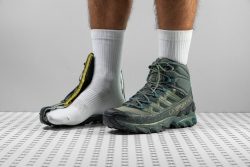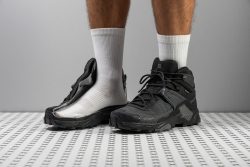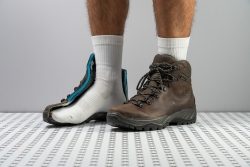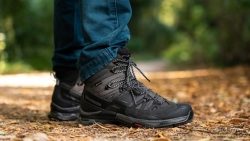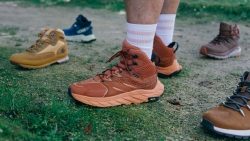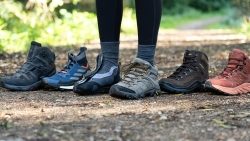7 Best Hiking Boots in 2025
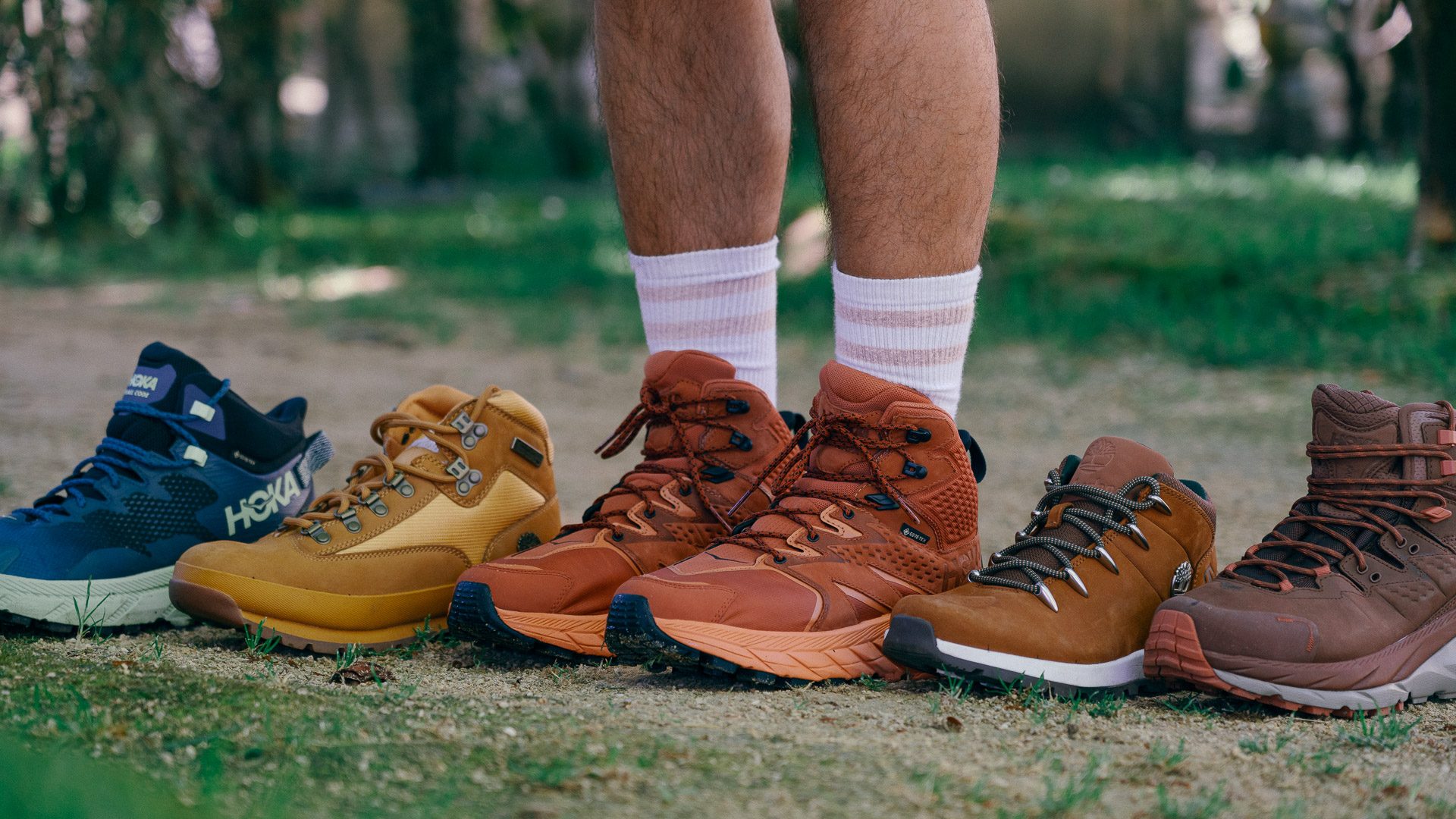
We buy shoes ourselves. We earn commissions when you buy through us, at no extra cost. Why trust us
Confused about what to buy after seeing the hundreds of boots available online? Well, worry not. Whether you’re a beginner hiker planning to go on a short hike or an experienced backpacker looking for a new pair of boots, we are here to help make your boot-hunting experience a breeze with our list of best hiking boots and detailed guide.
Having tested hiking boots on the mountains and in the lab, we know what makes the best one. Whether you’re looking for a heavy-duty trailblazer or a lighter option for some speedy hikes, we have selected our top picks in different categories.
How we test hiking boots
We at RunRepeat help you find the right hiking boot without going through the hassle of checking out every feature of every boot. Here’s a quick overview of what we do:
- We buy all the hiking boots using our own money, with no one capitalizing on us.
- We backpack and trek on different terrains and elevations, personally determining the level of grip, durability, stability, and breathability of the hiking boots we're testing.
- We take the boots to our lab to cut them in half and accurately measure more than 20 features like shock absorption, stack heights, outsole thickness, lug depth, outsole hardness, traction, and other features that are important for hiking.
Best hiking boots overall
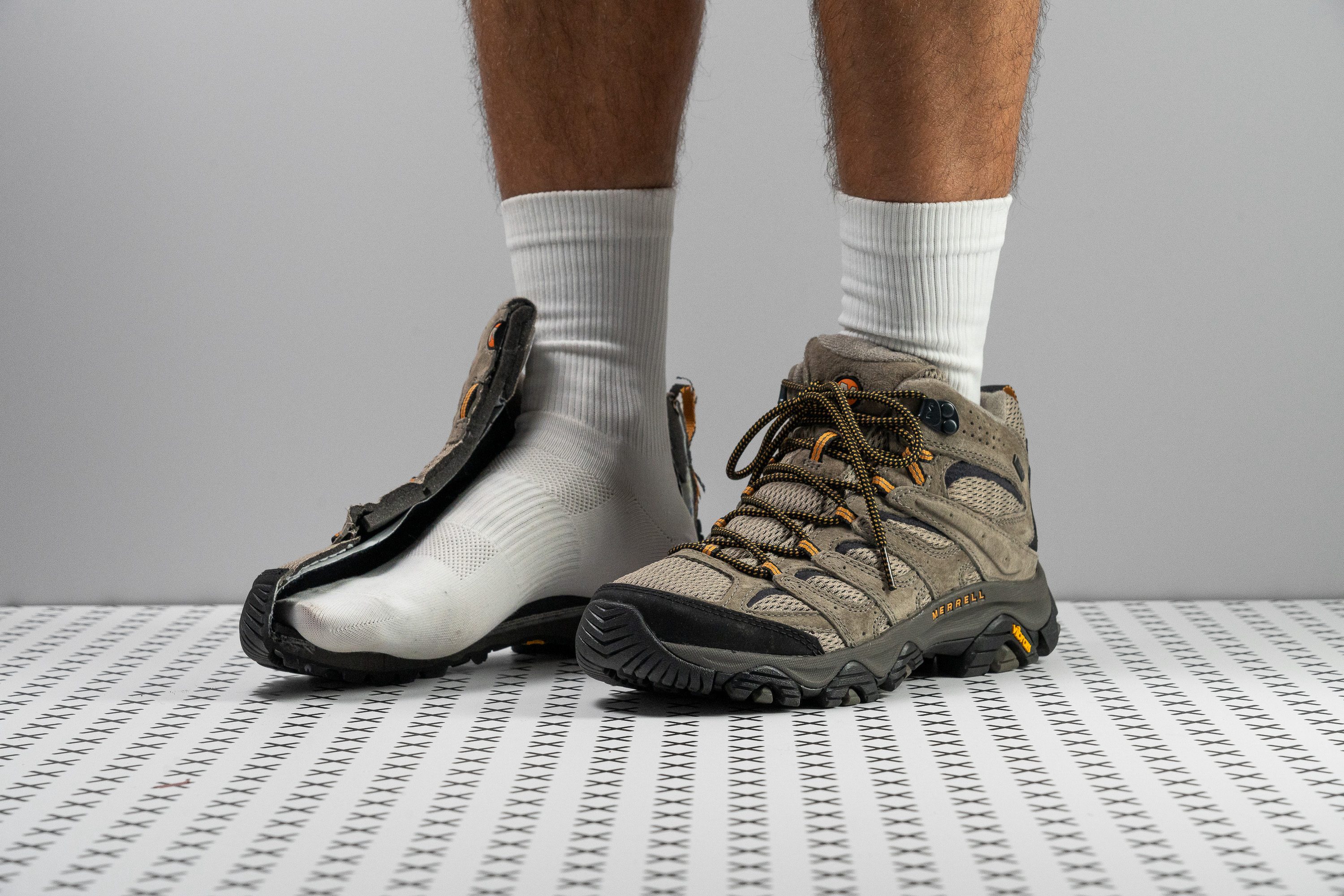




















































What makes it the best?
After meticulous testing and logging countless miles, we've crowned the Merrell Moab 3 Mid GTX as the king of hiking boots. It’s protective all around while ensuring the ride remains comfortable and stable as we cross various trail conditions, improving our performance and endurance during hikes.
The Vibram outsole, featuring deep 5.0 mm lugs, provides excellent grip on submerged rocks and slippery logs. Even as our feet go ankle-deep, not a drop of water touches us because of its Gore-Tex membrane. True enough, even smoke couldn’t escape in our test, earning a 1/5 in breathability.
The stack was thick and cushioned enough to shield us against sharp objects underfoot. Each stride felt surefooted thanks to the firm 32.8 HA cushion as per our durometer. Thankfully, it feels much softer in actuality due to the 24.6 HA Air Cushion technology.
The boot's rigid construction enhances stability by preventing ankle collapse. With a stiff shank in the midfoot, it resisted our manual twists and earned a high 4/5 in torsional rigidity. Surprisingly, it retains comfort by keeping its midsole bendable, scoring 33.2% above average in our flexibility test.
Because of the boot’s solid waterproofing, it will feel too hot for temperatures above 70°F (20°C). Best to use this pair in colder weather.
Pros
- Best-in-class waterproofing
- Great stability for moderate hikes
- Supportive for all-day wear
- Comfortable step-in feel
- Excellent grip on hard terrain
- Secure lockdown
- Sturdy construction
Cons
- Moderate impact protection
- Mesh panels are easy to tear
- Not for mud or soft terrain
- Moderate impact protection
Hiking boots with the best shock absorption
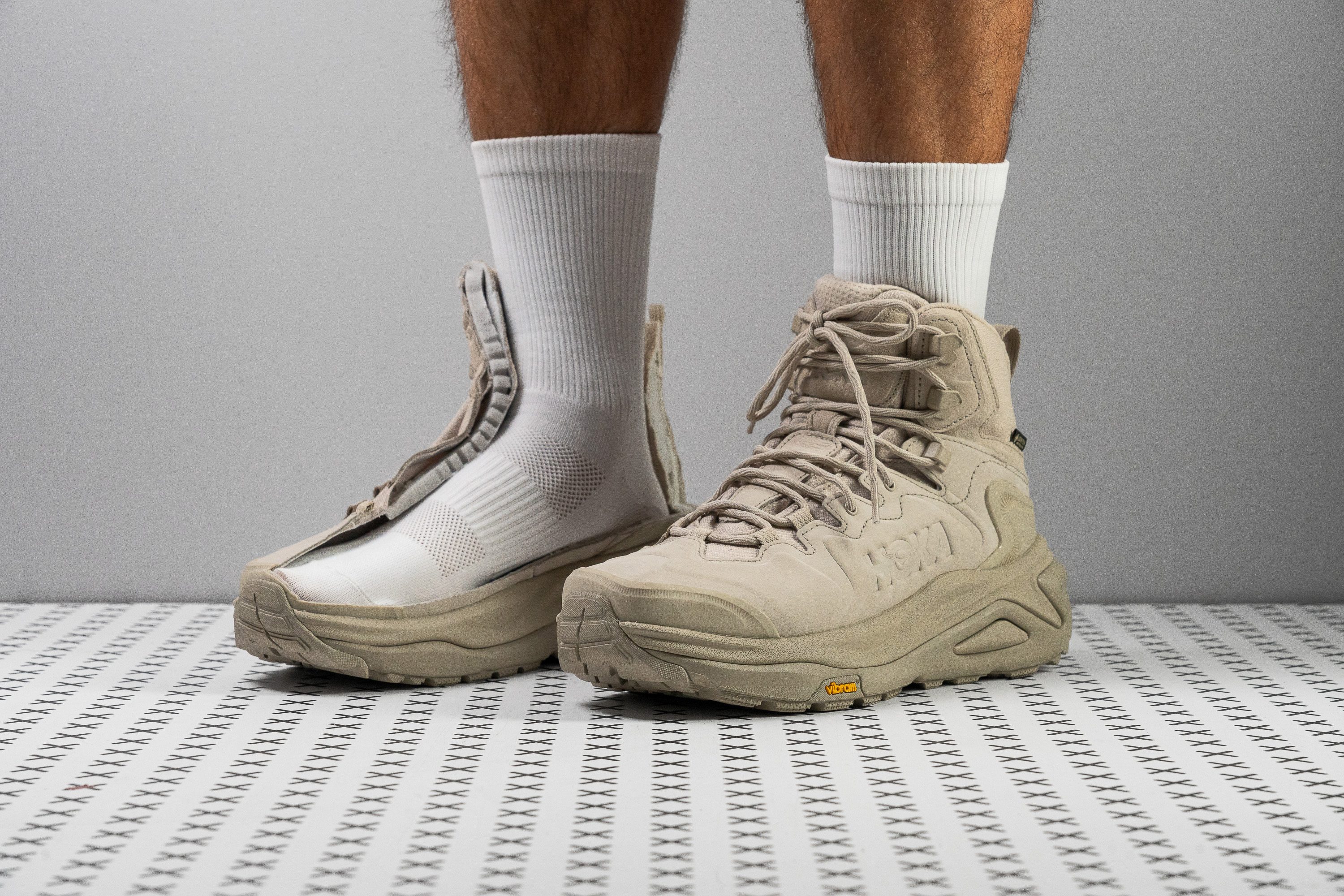
















































What makes it the best?
After countless hours on foot and in the lab, we found the hiking boot with the best shock absorption to be none other than the Hoka Kaha 3 GTX. With a great deal of foam underneath plus the iconic SwallowTail heel, each landing is well-protected. Its highly cushioned build and impressive support make it stand out from the crowd.
The boot’s protruding heel acts as a shock absorber and paves the way for super-smooth transitions. Backing this up with numbers, this boot recorded an exceptionally high 120 SA rating, meaning it offers 29.0% better impact protection than average. Our caliper shows plenty of material underfoot, reaching a sky-high stack height of 41.9/30.4 mm. We found the platform comfortable from the get-go because it erased the rocks underneath while offering some springiness.
Besides the balanced midsole, its broad width brings an inherently stable ride. Measuring 115.0/96.4 mm, we could easily position ourselves within the boot. It’s hard to twist our ankles here since it received the maximum 5/5 torsional rigidity rating in our manual assessment.
This comfort-loaded boot impressed us in many ways, except on the scale. At 19.4 oz (550g), it felt like an additional load to lift when fatigue started to creep in. Those seeking a lightweight boot should check alternatives.
Pros
- One of the best cushioned boots ever
- Extremely comfortable for long miles
- Highly stable and supportive
- Excellent traction on smooth surfaces
- Grips mixed and hilly terrain well
- Contains sustainable materials
- More streamlined than the Kaha 2
Cons
- Lugs got much shallower
- Heavier than average
Best hiking boots for backpacking
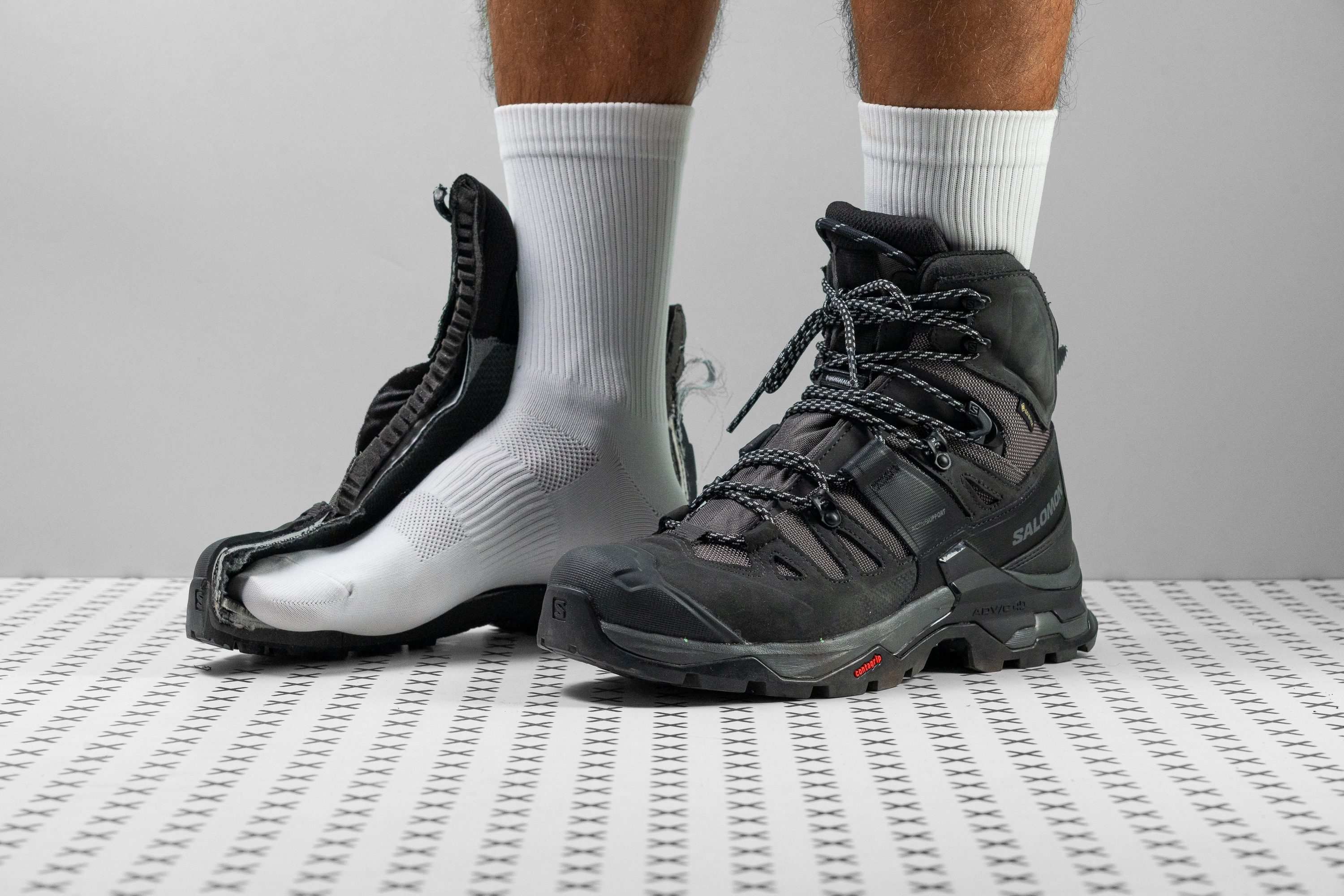















































What makes it the best?
On our hunt for the best hiking boot for backpacking, our research led us to the Salomon Quest 4 GTX. Exceptionally supportive, incredibly durable, and protectively cushioned, it’s the perfect companion for multi-day hikes over rough and rocky terrain.
As soon as we laced up the boot we could feel the support afforded by Salomon’s integrated ADV-C 4D chassis stabilizer. In the lab, we twisted and bent the boot, finally awarding it 5/5 for rigidity - the most rigid possible. Even when rock hopping on alpine trails with a heavy pack, we couldn’t twist an ankle if we tried!
If we could, we would give the Salomon Quest 4 GTX a 10/5 for durability! We applied our Dremel liberally to the toe box, the heel, and the outsole – all three far exceeded our expectations! After 12 seconds at 5K RPM at a force of 3.2N, the solid rubber toe cap barely showed a scratch. While hiking on rocky trails or light scrambling, we could relax, knowing our toes are fully protected from bumps and scrapes.
The midsole is of average firmness - 27 HA according to our durometer measurements. The stack height at the heel is 2 mm above average, meaning there is plenty of firm material underfoot to protect our heels from sharp rocks. Heel strikers in particular may enjoy the extra material below the heel.
While 23.4 oz (663g) is not unusual for a highly supportive backpacking boot, for most day hikers, this may be overkill. For this reason, we don’t recommend the Salomon Quest 4 GTX to light hikers or day hikers.
Pros
- Exceptional durability
- Top-notch waterproofing
- Excellent underfoot protection
- Highly secure ankle support
- Fantastic stability
- Comfortable in-boot feel
- Effective grip on various terrain
- Fits as expected
Cons
- A bit heavy
- Gets very stiff in cold
Hiking boots with the best energy return
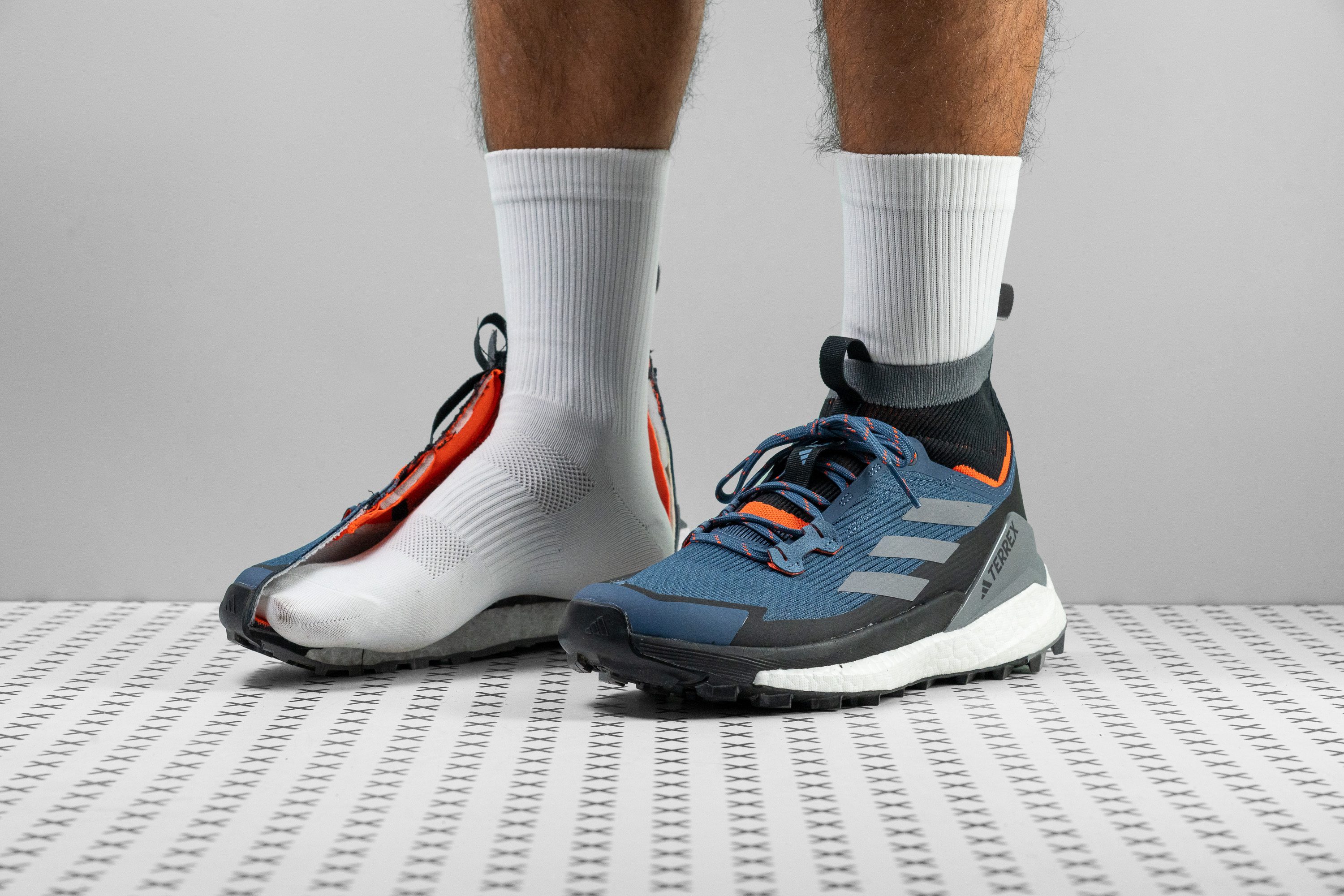













































What makes it the best?
Following rigorous lab tests and outdoor excursions, the Adidas Terrex Free Hiker 2 emerged as our top-tier hiking boot in terms of energy return. This agile and lightweight marvel offers solid rebound without foregoing flexibility and luxurious comfort, empowering us to navigate through the wild at full speed.
The midsole delivers otherworldly cushioning from start to finish, and we enjoy a spring in our step while hiking. The midsole features a generous stack height of 38.4/24.0 mm, with an exceptional 121 SA or shock absorption score in the heel. With its rockered geometry and bouncy foam, the ride feels smooth as we’re being launched forward. In our energy return test, we achieved a remarkable 66.0%, outperforming competitors by a significant 30.7% margin.
This boot rides more like a trail shoe on steroids with its light and natural feel. Weighing a mere 15.0 oz (425g), it’s 20.1% below average, providing a nimble feel that allows us to speed up.
Moreover, its adaptable midsole facilitates unrestricted movement. Our bend test reveals it's 49.7% more flexible than average. Equipped with grippy 3.7 mm multi-directional lugs, this boot excels on both wet and dry surfaces, efficiently shedding mud and debris along the way.
While its $200 price tag reflects its quality, budget-conscious consumers may want to explore alternative options.
Pros
- Extremely well-cushioned
- Exceptionally lively and bouncy underfoot
- Luxuriously padded interior
- Grippy and durable lugs
- Tackles wet surfaces confidently
- Very flexible and forgiving
- Excellent airflow
- Feels incredibly stable underfoot
- Supportive heel collar
- Rockered midsole
- Relatively lightweight
- High-quality construction
- Eye-catching design
Cons
- Needs breaking in
- Tricky to put on
- Expensive
Best lightweight hiking boots
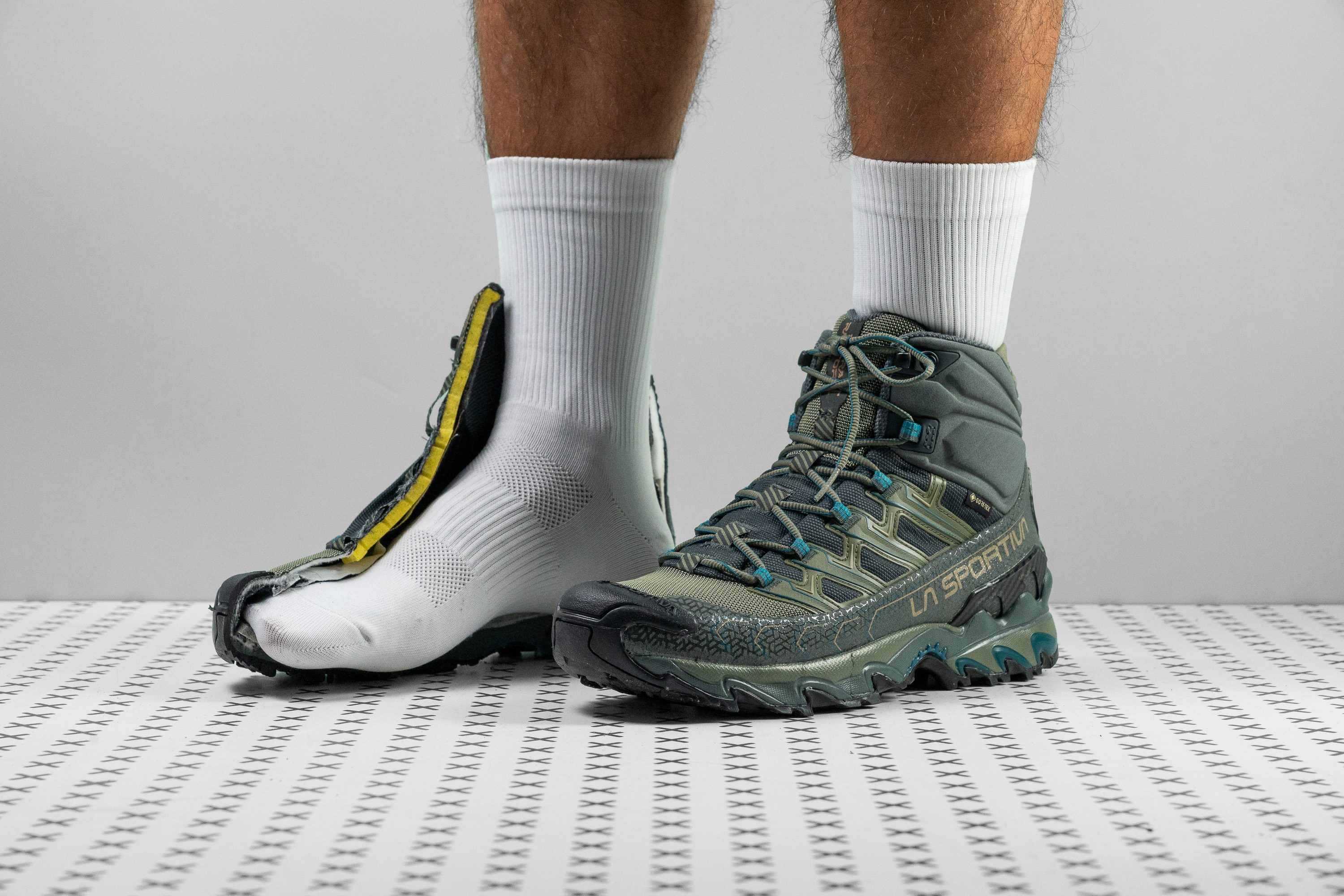















































What makes it the best?
When it comes to agility and support, the La Sportiva Ultra Raptor II Mid GTX is highly reliable. It offers confident footing without actually feeling like a boot. Lab tests highlight its low and loose build, making it our best lightweight hiking boot.
The boot feels more like a sturdier hiking shoe on foot, with its minimal weight of 14.6 oz (415g). That’s 21.8% lighter than average! We found ourselves feeling very nimble since the boot is easy to maneuver for scrambling and technical sections of the trail.
Its high level of flexibility adds to its weightless feel. In our bend test, it emerged 14.6% more pliable than average, making it comfortable even for relaxed strolls.
Despite this, the boot still feels very supportive because it offers strong resistance against ankle twists and excessive lateral movements. In our manual assessment, it didn’t budge to twisting forces, so we awarded it the maximum 5/5 torsional rigidity score.
Unfortunately, its streamlined build sacrifices toebox room for free toe splaying. We recommend those with broad feet to go for a more accommodating boot.
Pros
- Unbelievably lightweight
- Excellent waterproofing
- Doesn't let debris and falling rain/snow inside
- Exceptionally robust and durable
- Phenomenal grip on technical terrain
- Not so stiff and firm in low temperature
- Sufficient impact protection
- Highly supportive collar
- Ample flexibility
Cons
- Narrow platform
- Not for wide feet
Hiking boots with the best stability
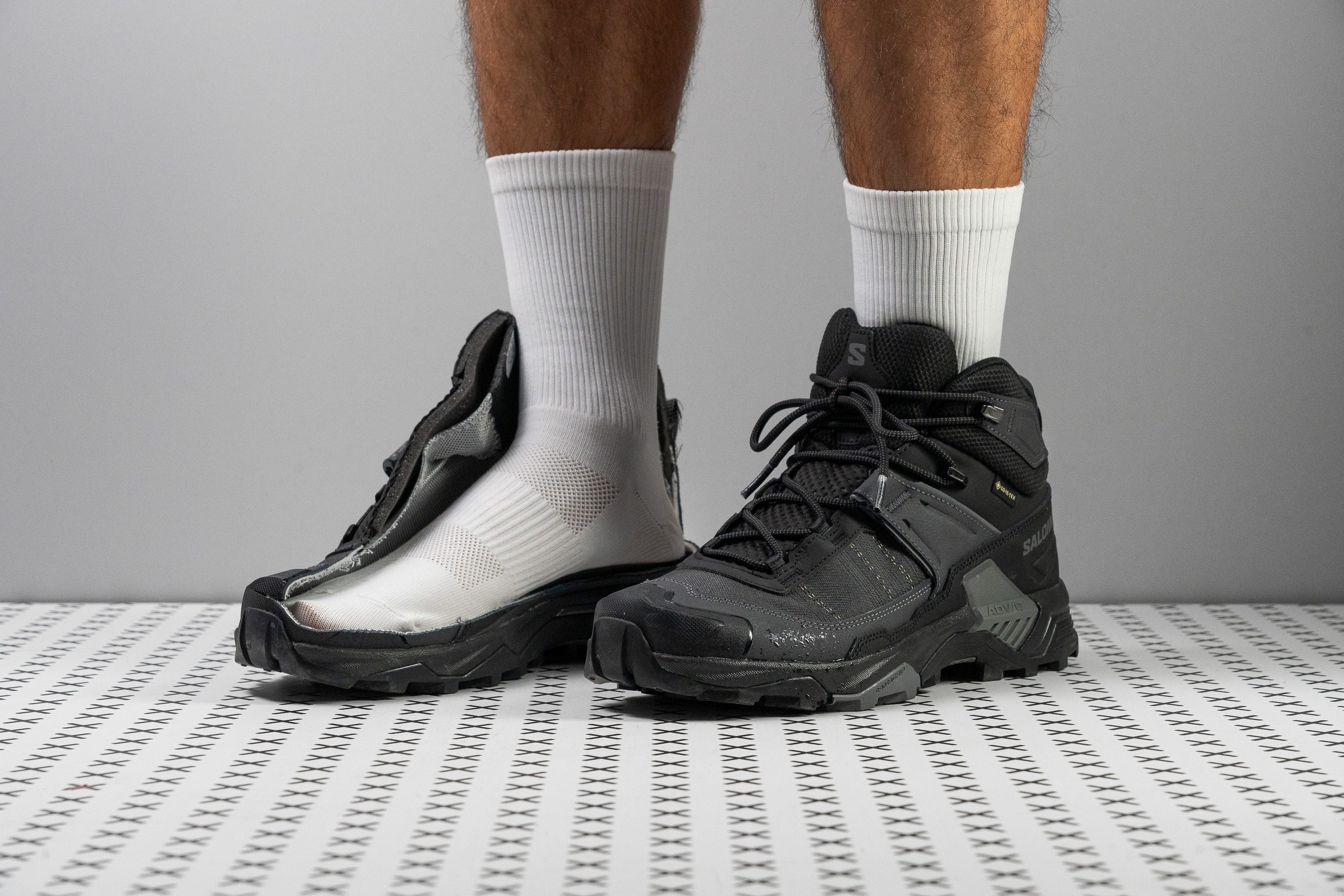











































What makes it the best?
The Salomon X Ultra 5 Mid GTX concludes our quest for the best stability hiking boot, boasting top-notch defense against losing balance, getting wet, and feeling fatigued. Lab tests verify that it offers rigidity and flexibility in the right areas, while keeping the ride natural and its build lightweight.
The boot features the Advanced Chassis, which aims to enhance foot containment with its stiff TPU brace in the midfoot. Its rigid construction effectively minimizes excessive lateral motions, as confirmed by its maximum 5/5 torsional rigidity score in our manual assessment.
Its malleable and airy build keeps it all natural and light on foot. The ride feels more like a trail shoe, which makes it versatile enough for city walks and daily use. Our scales show a 15.4 oz (437g) boot, making it 17.7% lighter than average. Even in our bend test, it proves its adaptive nature as it emerges 34.3% more flexible than its counterparts.
Crafted from Gore-Tex lining and a non-porous Matryx upper, it’s a reliable waterproof barrier, keeping our feet warm and dry even in wintry and wet conditions. We confirmed its impermeability in our smoke test and earned the lowest 1/5 breathability rating.
While its Contagrip outsole and 3.5 mm lugs deliver reliable grip on most terrains, it’s not aggressive enough for deep mud. Those who often encounter soft ground and sticky mud should find a boot with deeper and toothed lugs.
Pros
- Stable and grounded platform
- Flexible forefoot adds maneuverability
- Great grip on wet terrain and rocks
- Surefooted on mixed and hilly trails
- Much lighter than average
- Excellent Gore-Tex waterproofing
- Tough and durable upper
Cons
- Minimal cushioning and shock absorption
- Not for deep mud
Best leather hiking boots
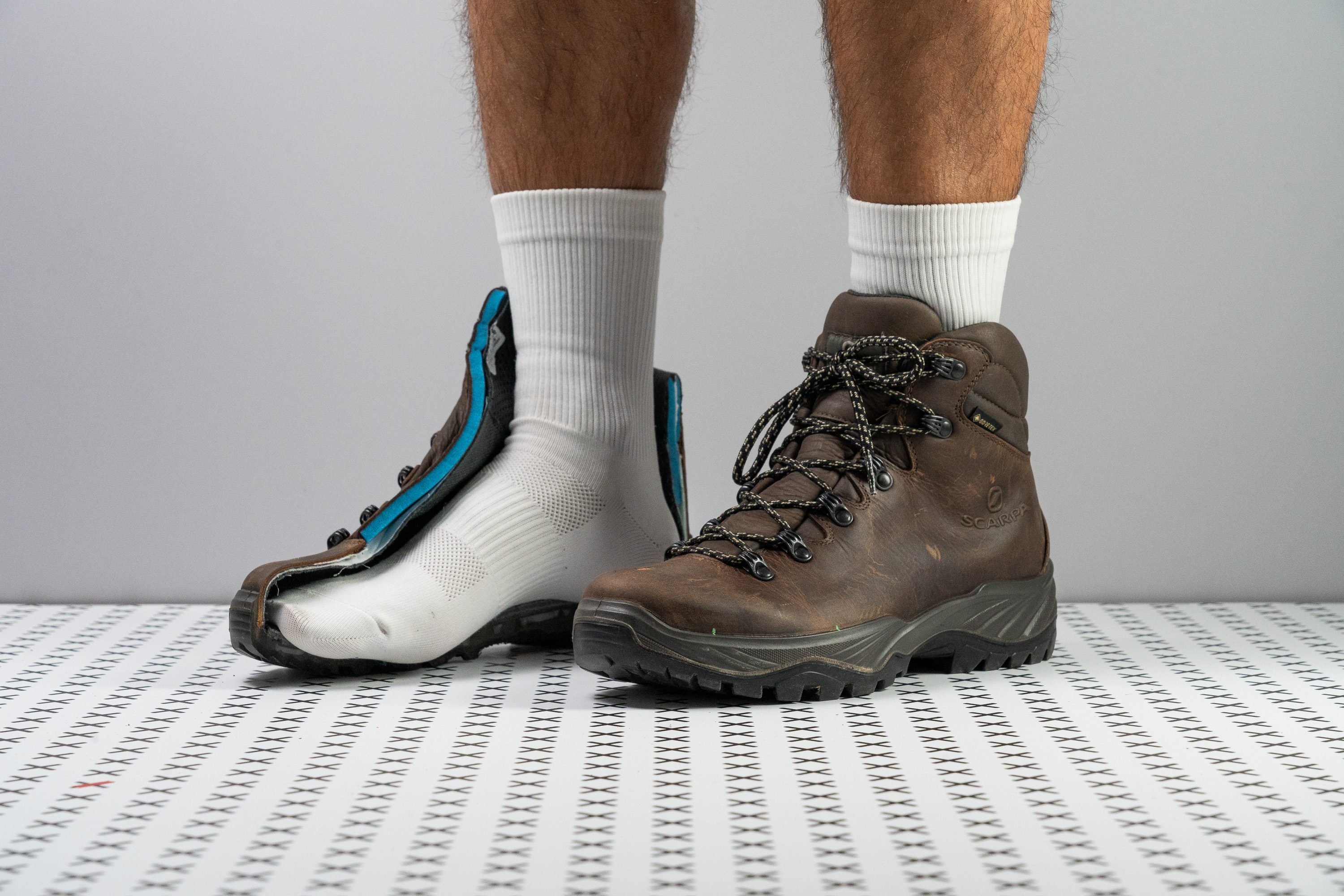







































What makes it the best?
After multiple wear tests and lab analysis, we discovered Scarpa Terra GTX as the best leather hiking boot. It delivers the support and protection we need to traverse rough terrains with its impenetrable upper, stable ride, and impressive adhesion capabilities. Its tank-like build gave us confidence like no other.
Terra GTX kept our feet warm and dry as we sloshed through puddles and streams. In our breathability tests, it blocked off smoke and light completely with its solid leather upper, confirming its insular nature.
Each stride feels surefooted even as we carry heavy backpacks on technical trails. The firm and low-profile platform enhances ground feel and doesn’t compress easily. Our durometer confirms it’s 16.1% harder than average. Providing additional support is the stiff heel that scored 4/5 in our manual assessment. Thankfully, it didn’t place unwanted pressure on our Achilles since it tapers down slightly in the rear area.
Underfoot, is the renowned Vibram outsole that is reliably durable and grippy. It has 4-mm multi-directional lugs that serve as our source of traction and brakes. From loose gravel to slippery mud, Terra GTX powered through them all.
Unfortunately, it’s a heavyweight hiker at 20.3 oz (575g). For long hikes, it felt undeniably chunky and intensified the pull of gravity.
Pros
- Glue-like underfoot, even on wet surfaces
- Insanely comfortable
- Reliably stable and supportive ride
- Resilient and high-quality build
- Durable Vibram outsole
- Watertight and warm
- Quick break-in time
- Performs consistently in the cold
- Strong ankle support
Cons
- Quite heavy
- Cushioning could be better
- Scuff magnet
When to go for hiking boots and not shoes
The main anatomical difference between the hiking shoes and boots is the cut: shoes are usually low cut and boots are mid or high cut. Performance wise, that means that the boots offer ankle support thanks to the heel collar that surrounds the ankles and can be tightened with laces.
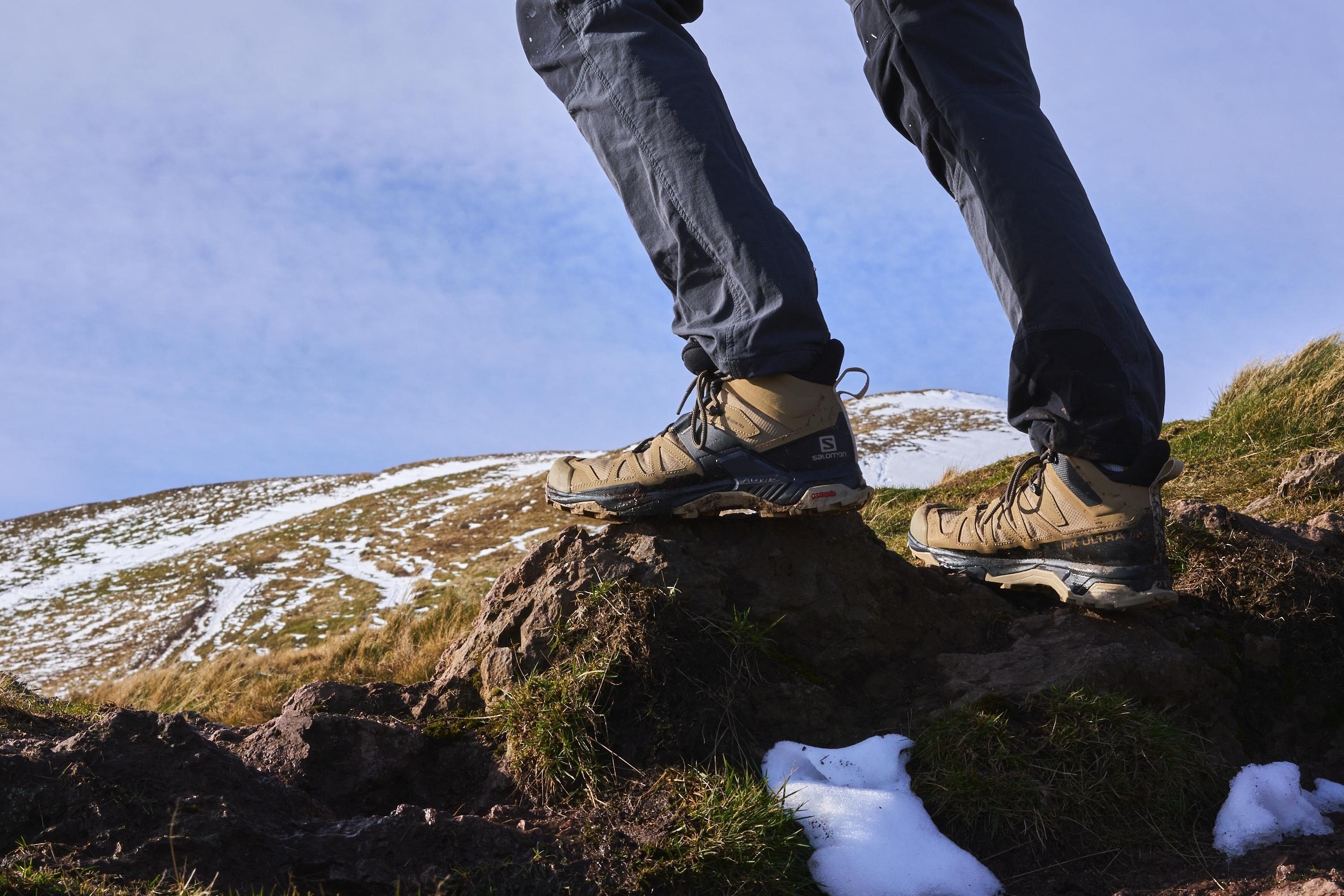
Based on all the tests we’ve performed on our hikes and in our lab, we recommend getting hiking boots when:
- you need ankle support because your ankles are prone to twisting and prefer being secured
- you plan to go backpacking
- you don't like water or debris getting inside of your hiking shoes (and wearing gaiters is not your cup of tea) or if
- the terrain is so harsh you want more protection all over your feet and ankles.
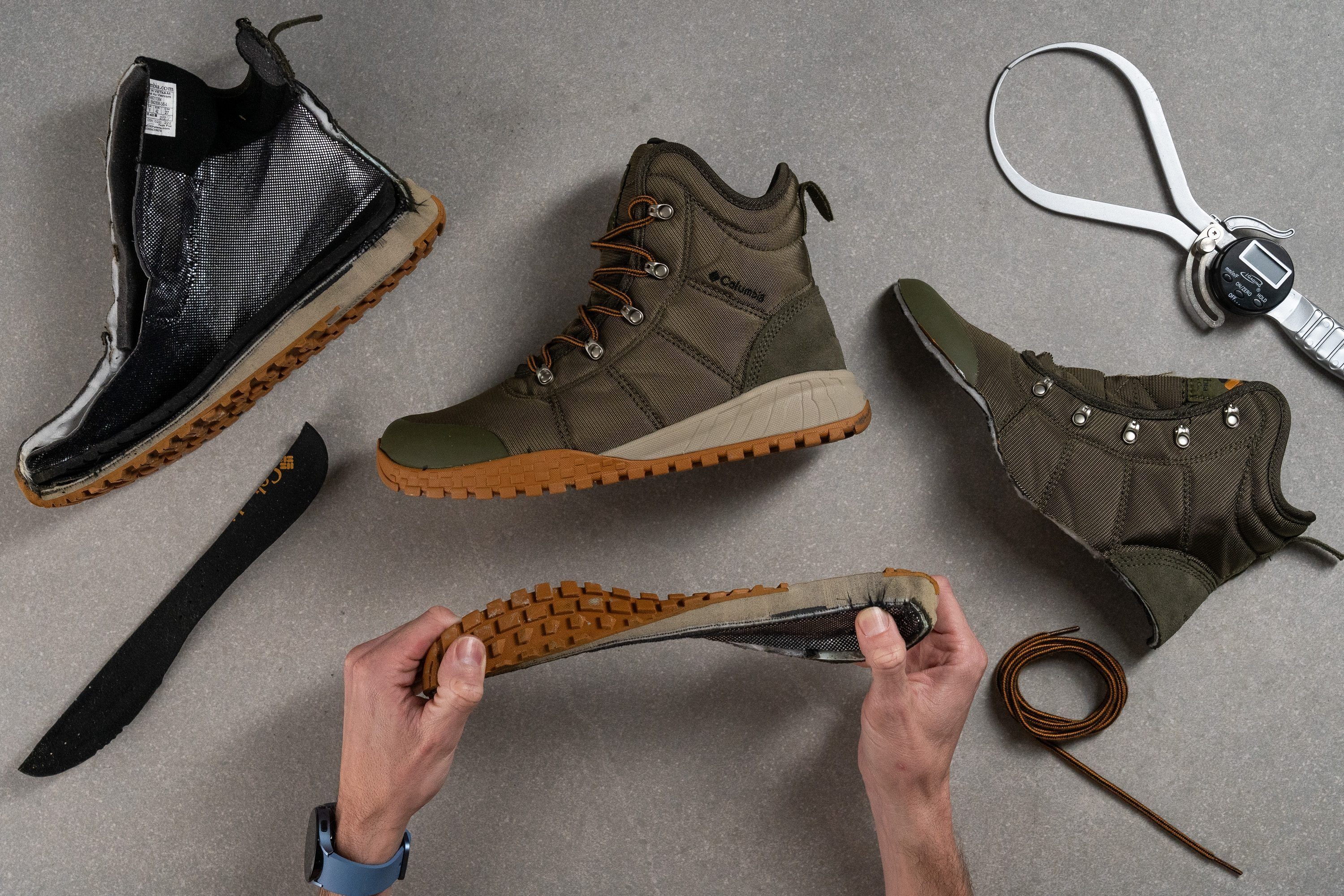
Nail the perfect fit in hiking boots
If you’ve never bought the hiking boots before, these are our guidelines on how to make sure the fit is as good as possible:
- Go hiking boot shopping later in the day, in the afternoon or in the evening. By then, your feet are already somewhat swollen naturally. The swelling happens on the hikes as well so it’s best to match the conditions as much as possible.
- Bring your hiking socks and orthotics (if using) with you and try the boots on with them.
- Lace the boots up and sense if there are any hotspots. Boots should be comfortable and snug, but not too snug or too wide. You should have one thumb’s width of room behind your heel when you push the foot forward. Or, find as much room in front of the toes when your heel is glued to the back.
- Try the boots on the ramp! Go up and down. There should be no heel slipping and no sliding inside the boot.
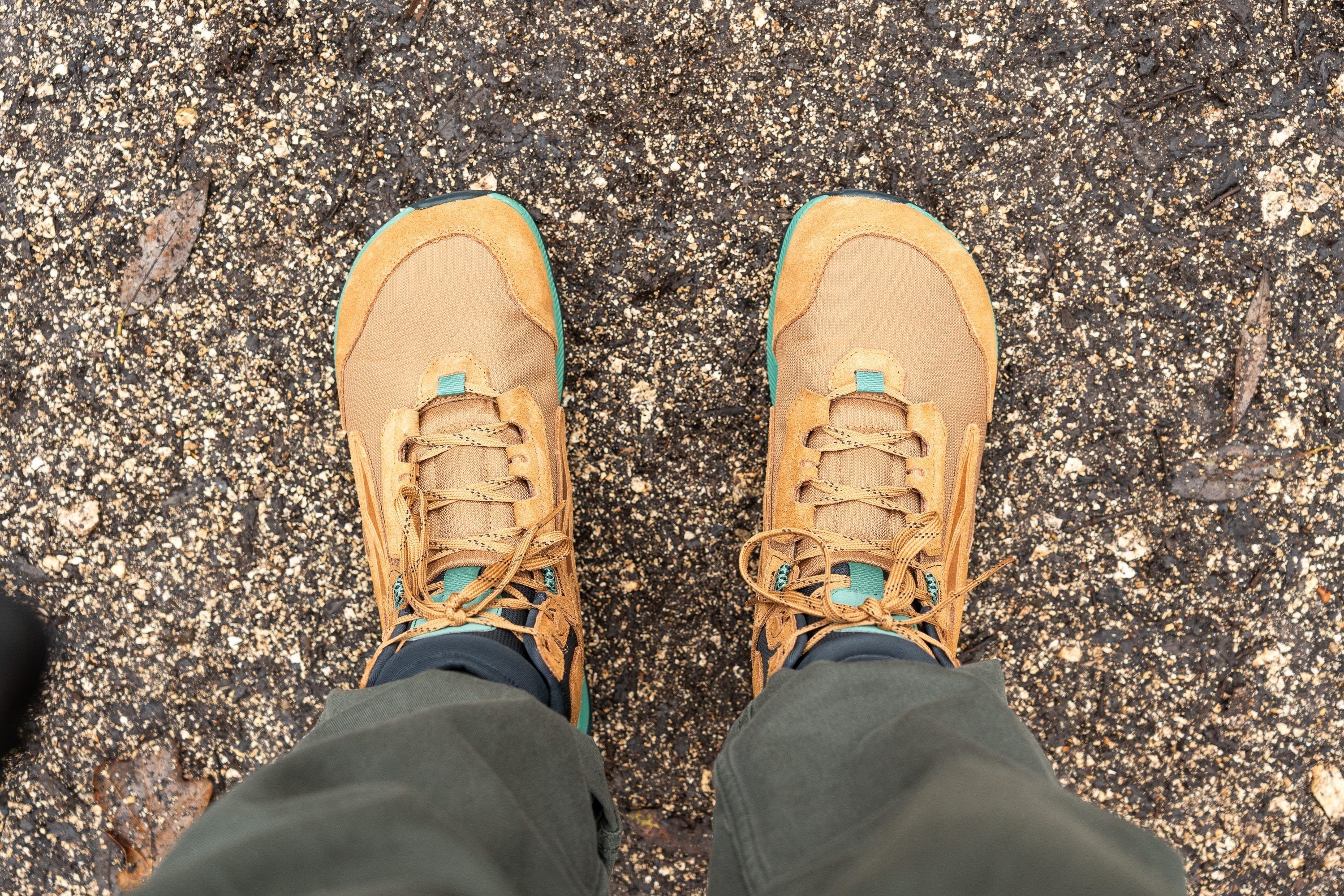
Most boots need some time to be broken in properly. Keep that in mind when planning your hiking adventures.
Hiking boots for beginners and easy hikes
If you’re new to hiking and want to get your first pair of boots, we recommend all-terrain hiking boots that allow for a little bit of everything but are not to be used on very demanding hikes. Very demanding means very long or even multi-day hikes on technical terrain, maybe even with a heavy backpack.
For beginners, we recommend lightweight hiking boots with around-the-average lug depth. That means they should weigh less than 17.6 oz (500g) and have lug depth around 4 mm or less.
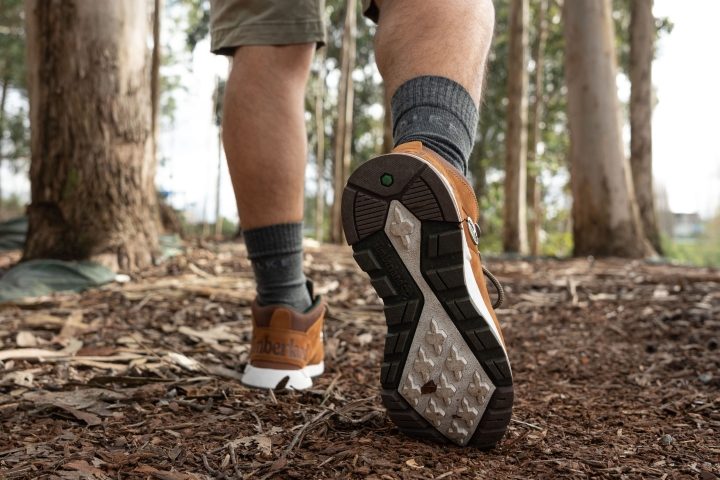
Heavy hiking boots can be too much at first if you’re new to hiking and might tire your feet sooner rather than later. Very deep lugs work great in soft wet ground but are also less durable. Average lugs (or close to the average) are great for light hikes on usually well-maintained trails.
Another tip for beginners: hiking boots with a heel tab (pull tab) are usually much easier to put on.
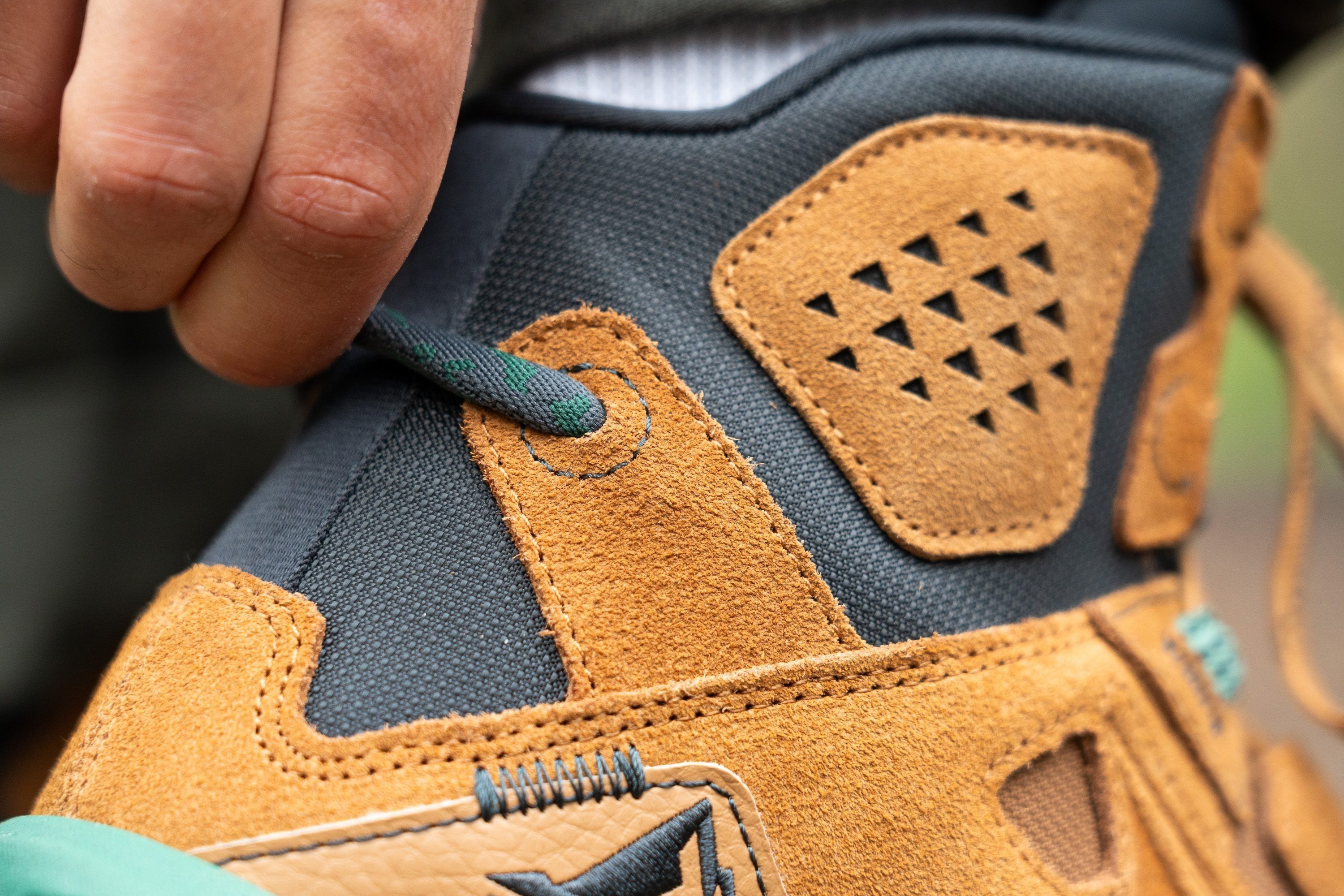
Grip and lug thickness: don’t slip!
In hiking, traction is a priority. The boot can fit perfectly but if you choose boots for dry hard-packed trails and end up covering dozens of miles in the mud, you won’t be happy and maybe not even standing due to all the slipping.
In our lab, we use a digital caliper to measure the thickness of the lugs.
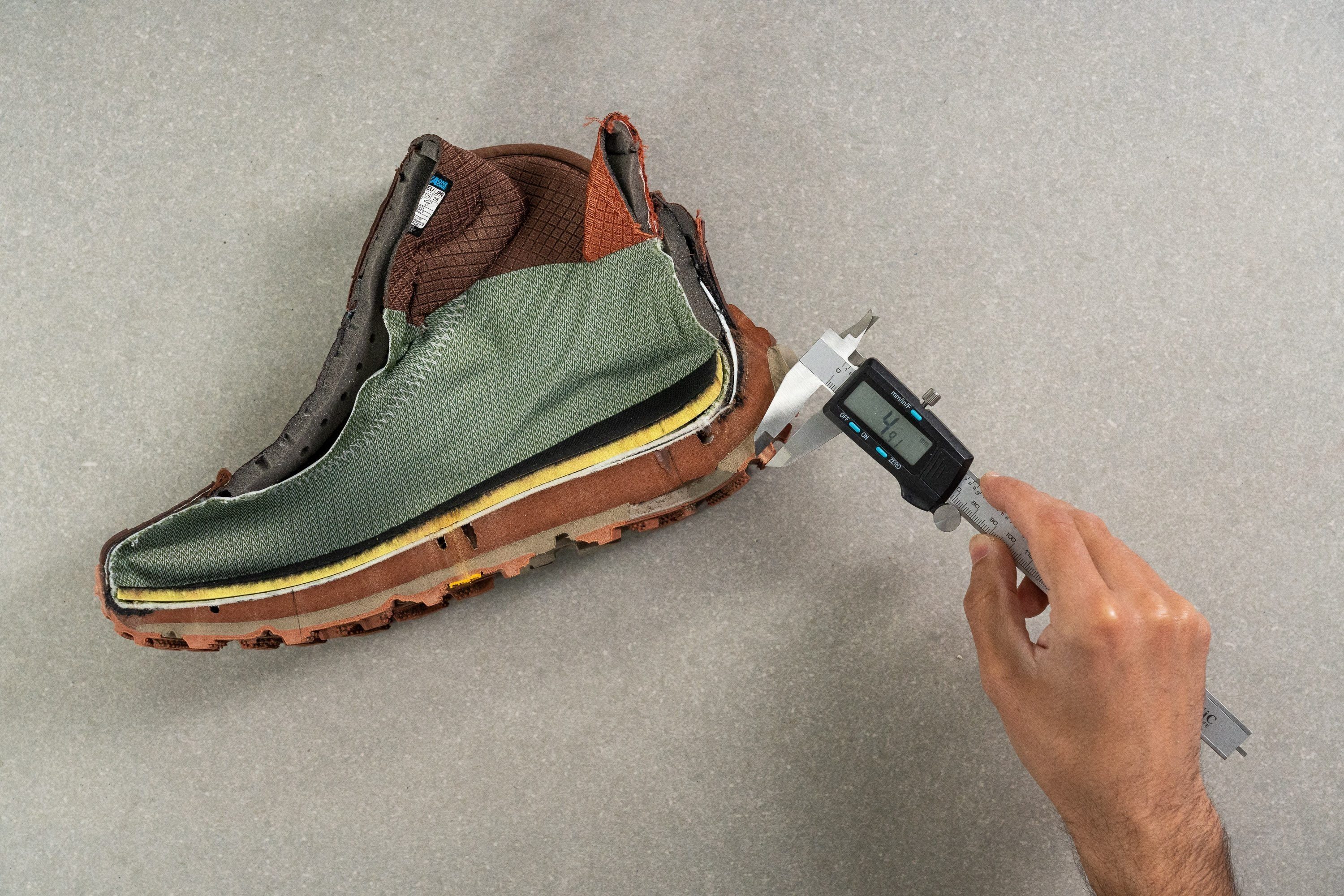
The deeper the lugs, the better the grip. This especially applies when it comes to soft ground like mud, slush, snow. Here are our general guidelines:
- Choose very deep lugs (4mm and deeper) if you plan to hike mainly on wet soft ground (snow, mud, slush).
- Chose average lugs (~4 mm thick) if you plan to cover a little bit of everything when hiking - maybe it will be wet, dry, soft, hard.
- Choose shallower lugs (less than 4 mm) if you plan to stick to hard-packed trails or rocky terrain.
It’s important to note that the hardness of the rubber also plays a role in traction. Generally, softer rubbers are stickier and more pliable while harder rubber outsoles offer more protection and durability.
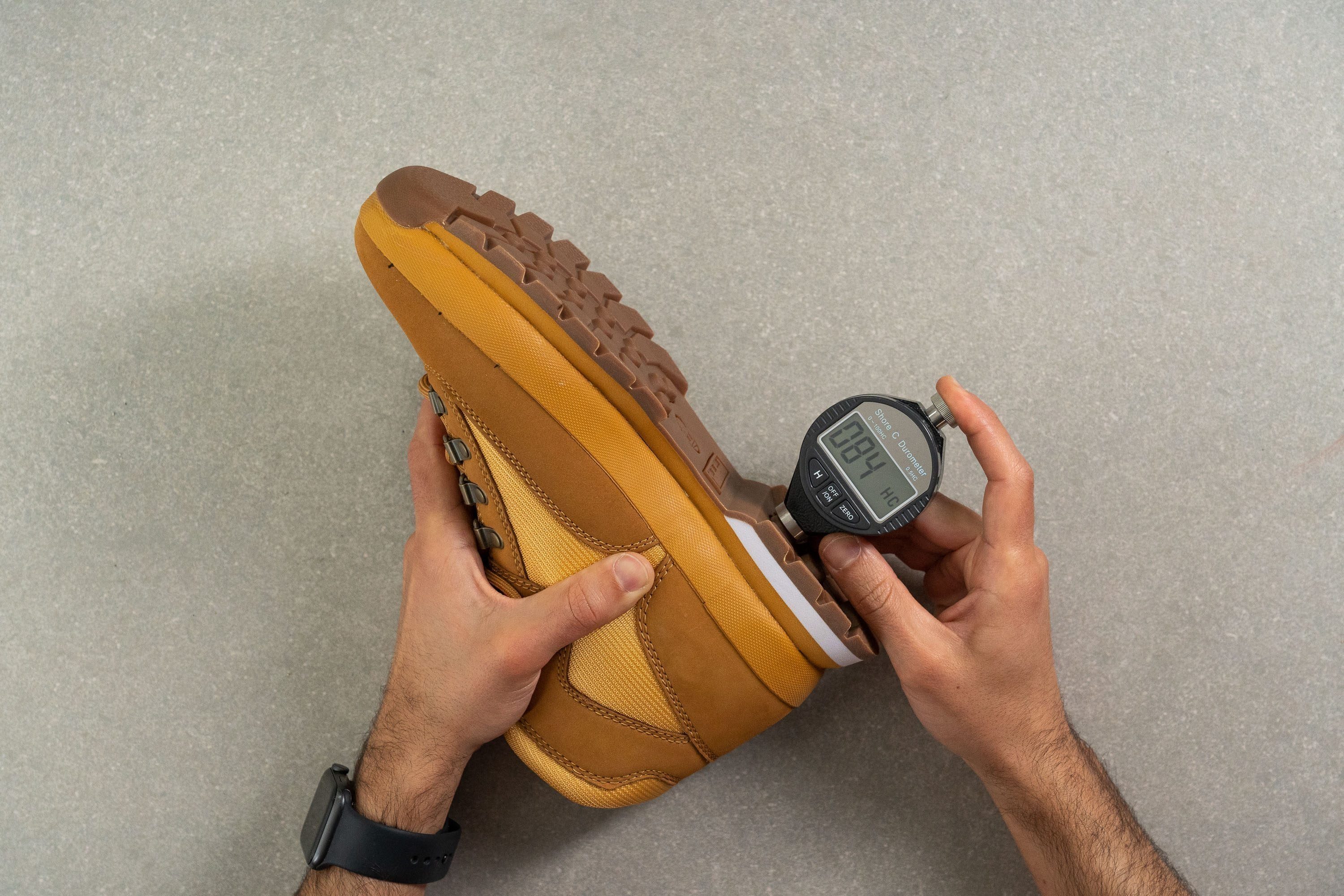
We measure the hardness of the rubber with a shore C durometer. The higher the number, the harder the rubber.
Shock absorption and energy return of hiking boots
Shock absorption tells us how good the boot's midsole is at absorbing the impact forces when hikers land on the heel. The better the shock absorption, the lower the strain put on the legs. High shock absorption feels very protective!
Testing the shock absorption and energy return of hiking boots in RunRepeat lab
While not directly related to shock absorption, it's best to look at energy return at the same time. This is because energy return tells us how good the midsole is at bouncing back after it was compressed at the landing. When boots have high energy return, we experienced that as a lively, responsive ride.
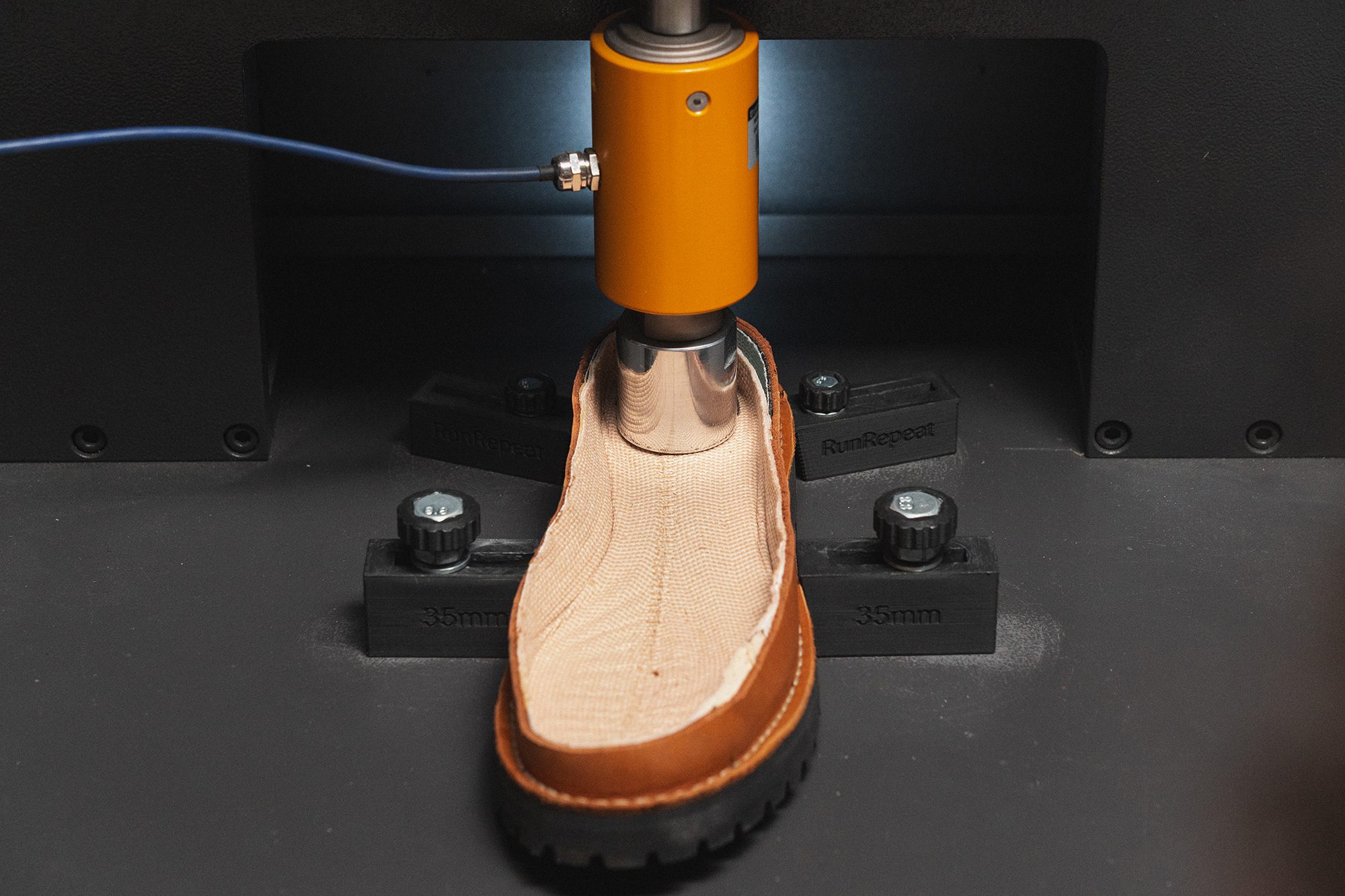
We test these features using the ASTM F1976-13 methodology, which is considered the gold standard in this area. Below, we will list hiking boots with the best shock absorption and energy return, so that you can avoid dull midsoles that cause premature leg fatigue.
Stability in hiking boots: 3 tests we do
Feeling planted when hiking, especially on uneven terrain, is imperative. Hikers who prioritize stability do not enjoy narrow and high platforms.
When doing test hikes, we always check for lateral stability. Is it easy to twist the ankle? Is it easy to bring the shoe out of the balance? See on the video below how that looks like.
Doing the lateral stability test on our wear tests
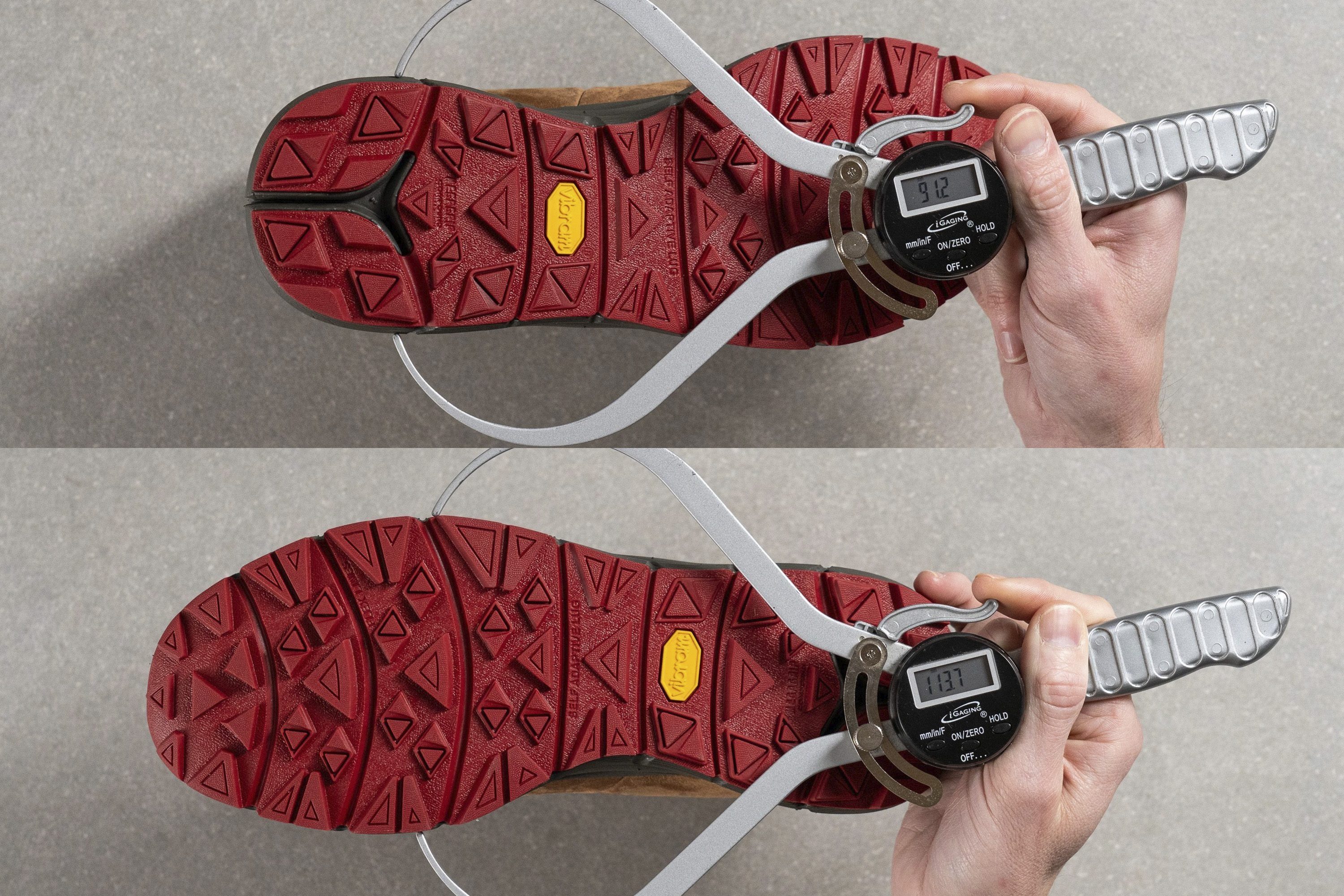
We take this a step further: we also measure the width of the base (midsole). The wider the base, the more stable the hiking shoe is.
Additionally, we measure the stiffness of the heel counter.
Flexible ones allow more ankle movement and stiffer ones, especially when the laces are tightened properly, secure the ankle to a high degree which helps with the overall stability of the shoe.
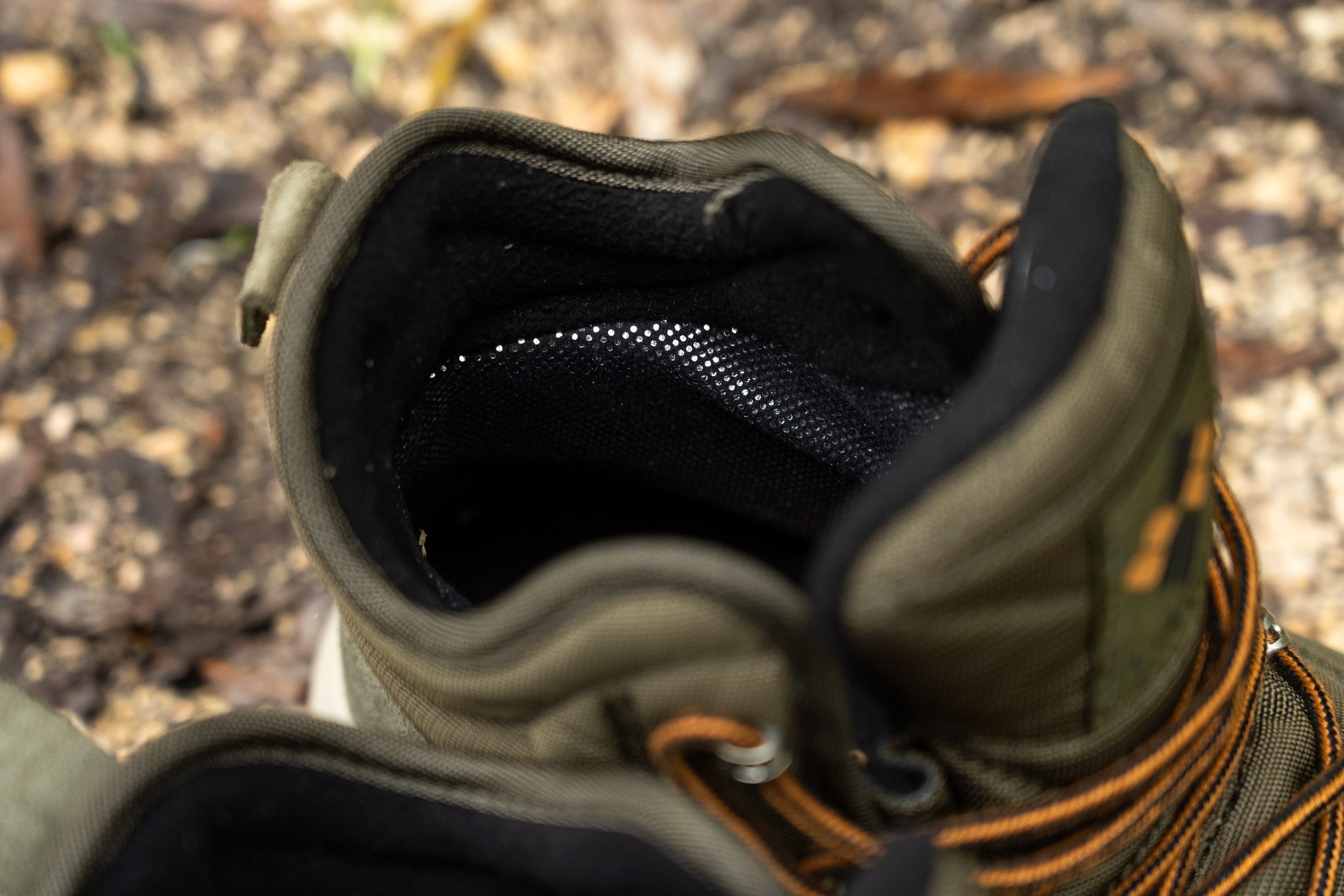
Hiking in summer: prioritize breathability!
We don’t just perform wear tests but we also do lab tests. This is especially important in breathability because feet sweat differently but our tests are standardized and every hiking boot is treated the same way in the lab.
Testing the breathability of hiking boots in RunRepeat lab
We make smoke with a smoke machine and pump that smoke into the shoe. Then, we watch where the smoke comes out and at which pace. This allows us to rate the breathability of the hiking boot on a 1-5 scale. 5 means the hiking boot is perfect for summer, as breezy as it gets! 4 as well. Such breathable shoes are never waterproof which is great because waterproof membranes are not needed in summer.
Usually, we'd look for the highest breathability ratings: 5/5 and maybe 4/5. However, in hiking, even 3/5 is considered breathable, given that their average breathability (1.4/5.0) is lower than the average breathability of, say, running shoes (3.3/5.0).
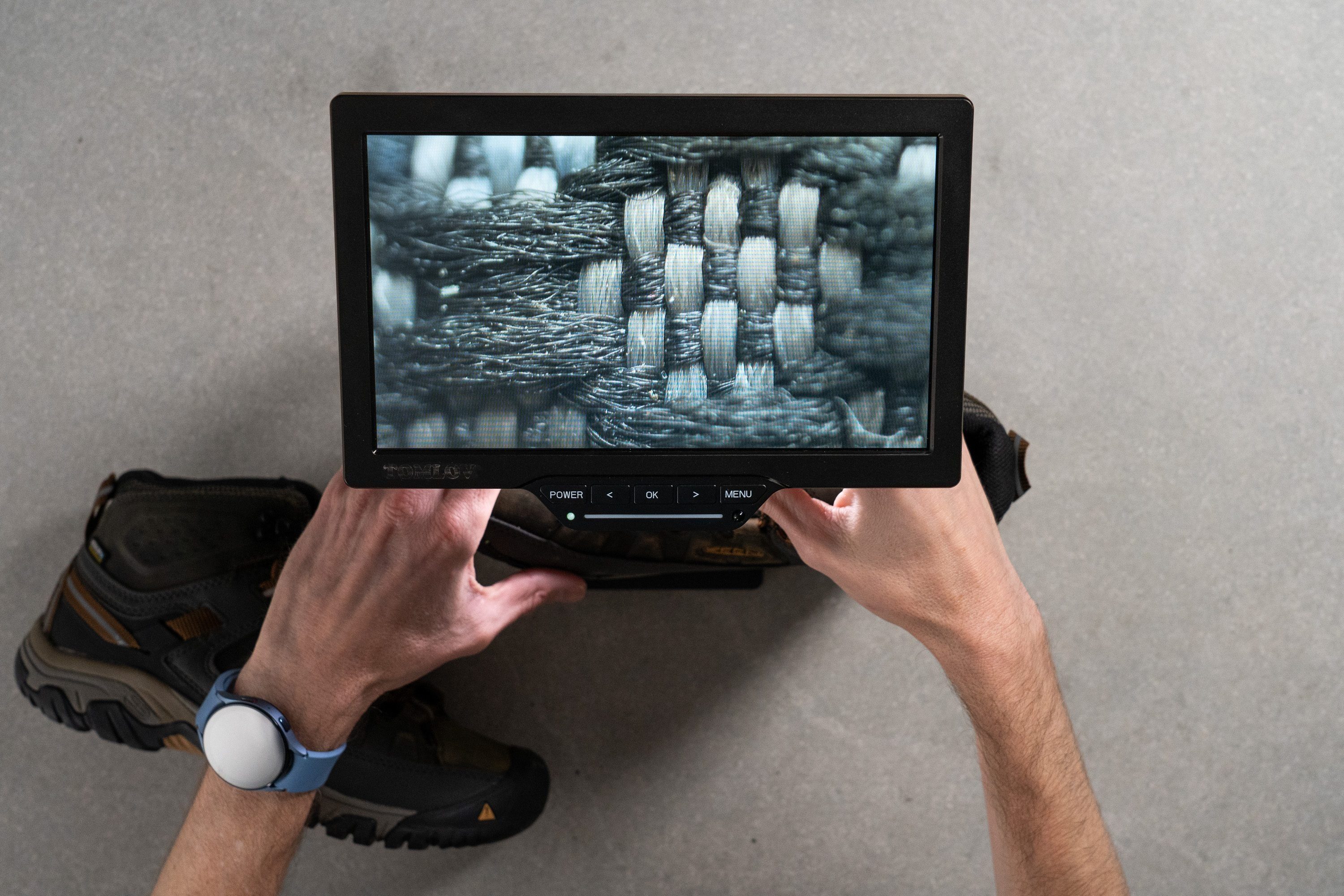
It’s very interesting to look at the uppers under a microscope and notice how waterproof hiking boots have uppers that are tightly woven and have absolutely no ventilation holes, while breathable hiking boots have uppers that are more loose.
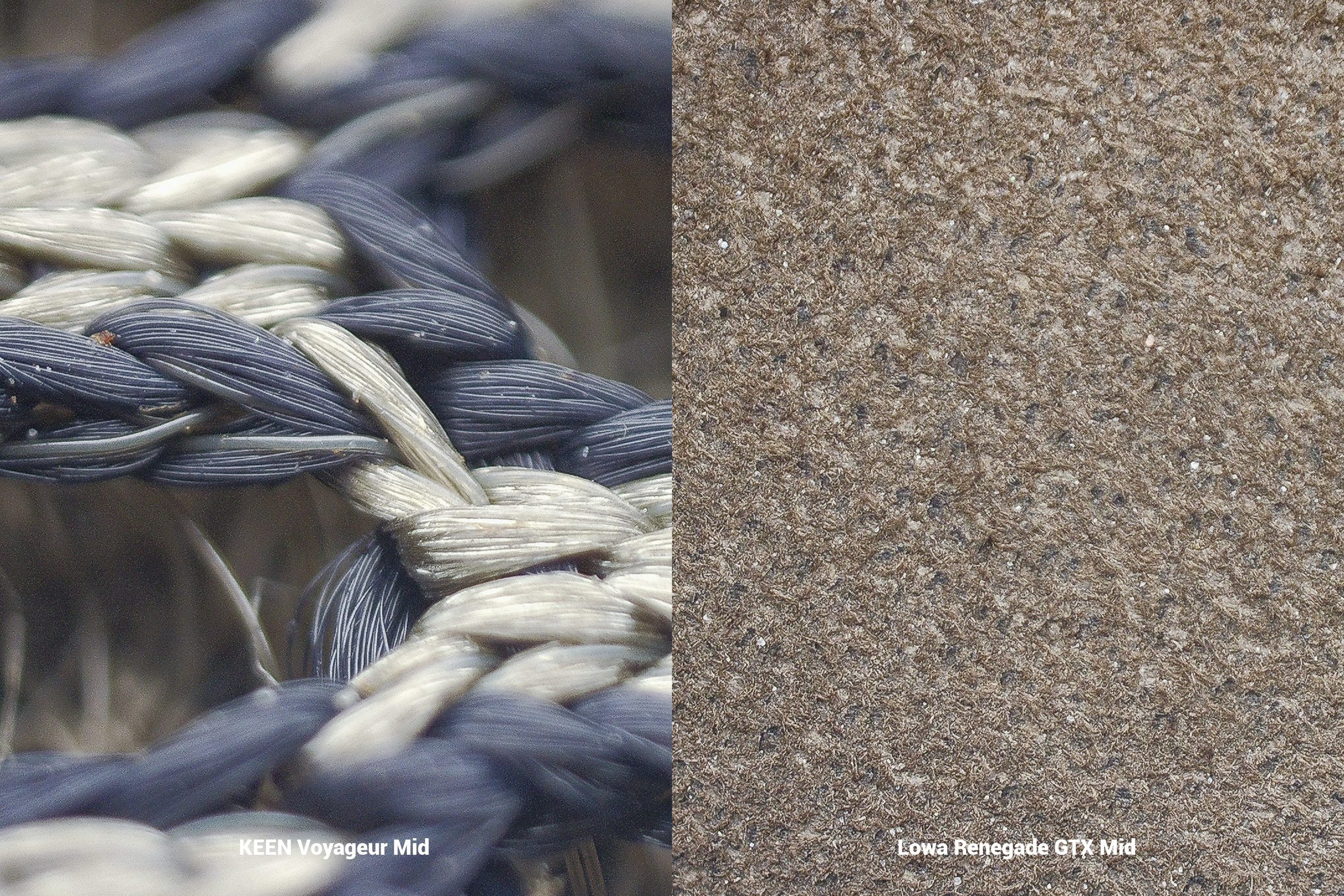
Winter hiking boots: what to look for?
For winter hiking boots, we highlight 3 features: waterproofness, warmth and grip that works on wet ground. But, we also emphasize our freezer test which allows us to test flexibility of the boots once they've been exposed to cold weather. Will the boot feel like a brick or almost identical to how it feels at room temperatures? We answer these questions!
When it comes to waterproofness, it is best to look for waterproof membranes.
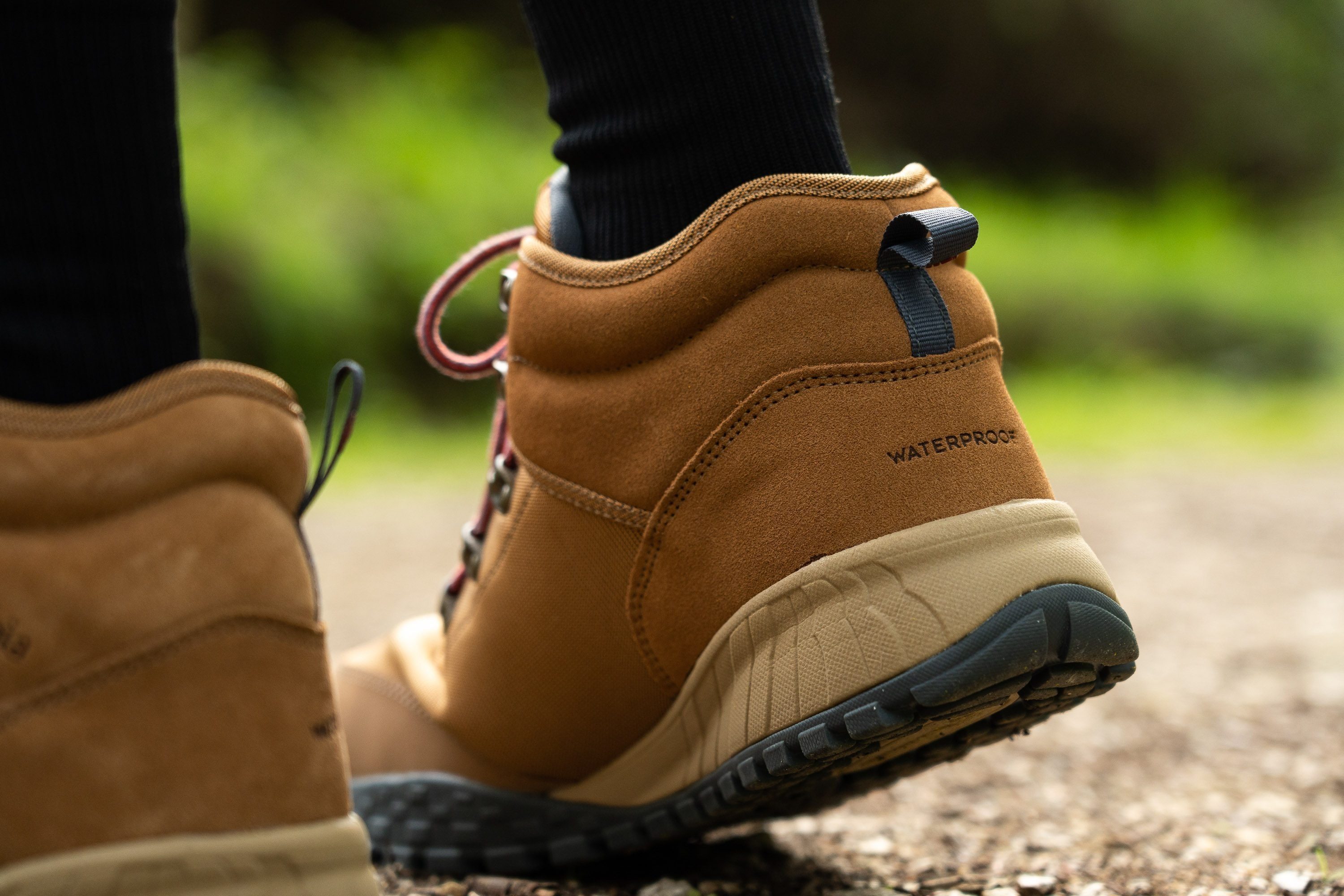
The most common one is Gore-Tex but some brands have their own trademarked membranes. The good thing is that waterproof hiking boots are horribly rated on the breathability test which means they are warmer.
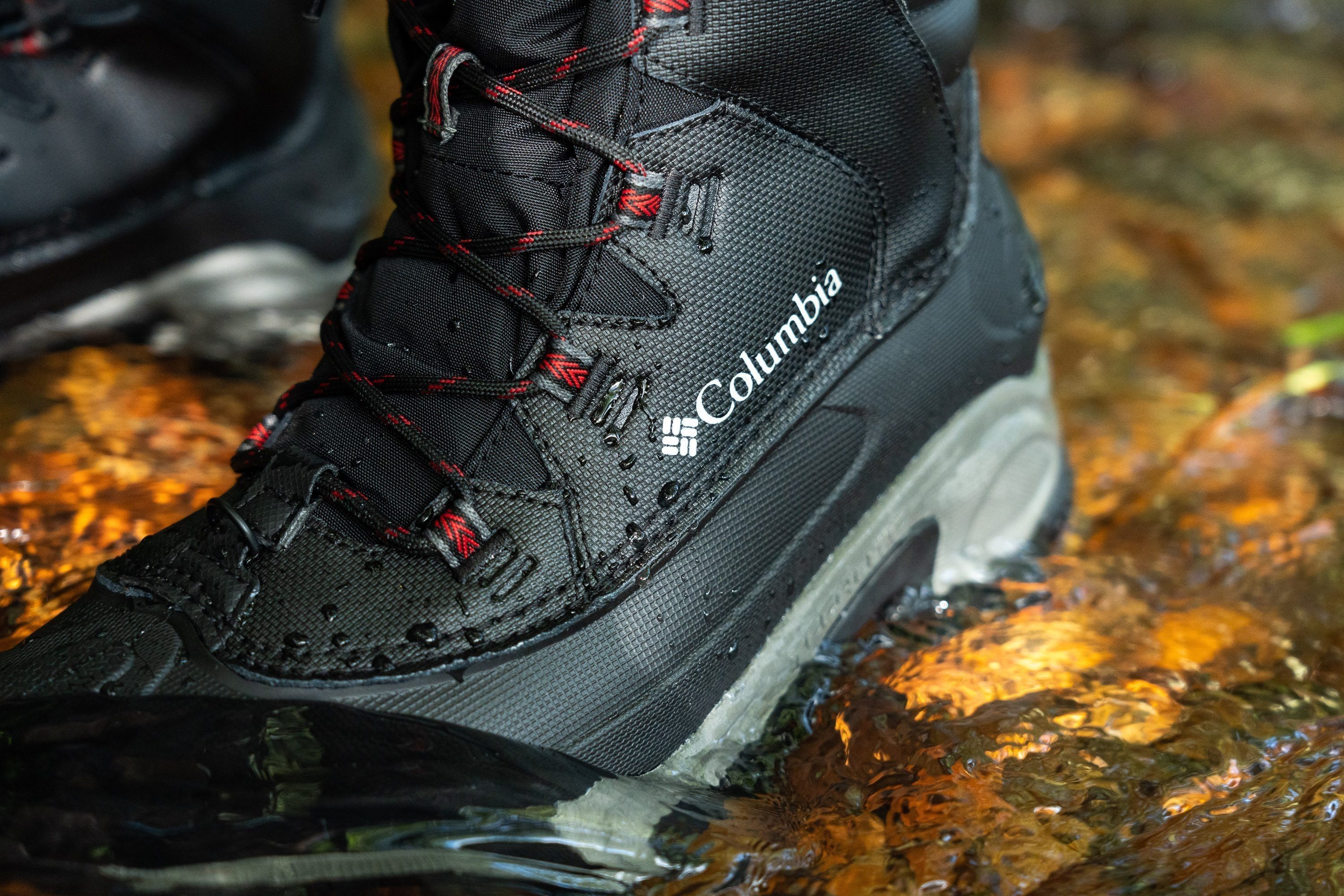
Waterproof hiking boots are rated with 1 or 2 on our breathability test, meaning they are the least breathable. If you are worried about very cold weather, also look for insulation in the hiking boots.
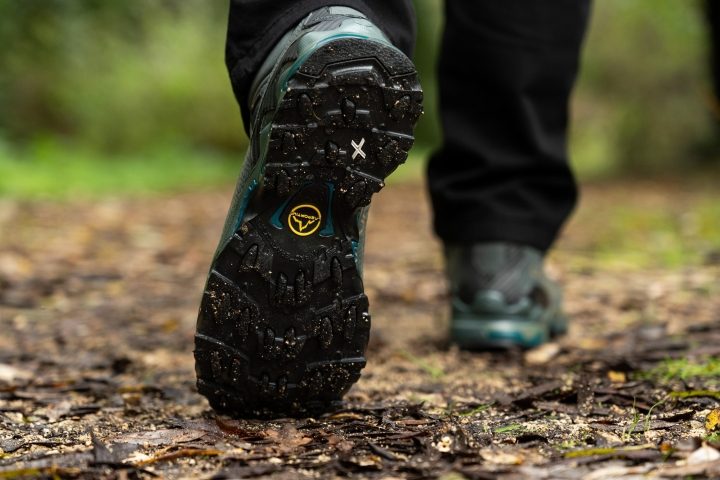
When it comes to the grip for winter hiking, we recommend deep lugs because winter usually means snow, slush or mud. When we say deep, we mean at least 4mm. No worries there, because our caliper measurements are already done and at your service.
It’s also great when hiking boots are super stable, this means that the base is wider than the upper and that the heel collar is rather stiff as covered in the section on stability.
To determine how the boot performs in winter, we put it in the freezer for 20 mins.
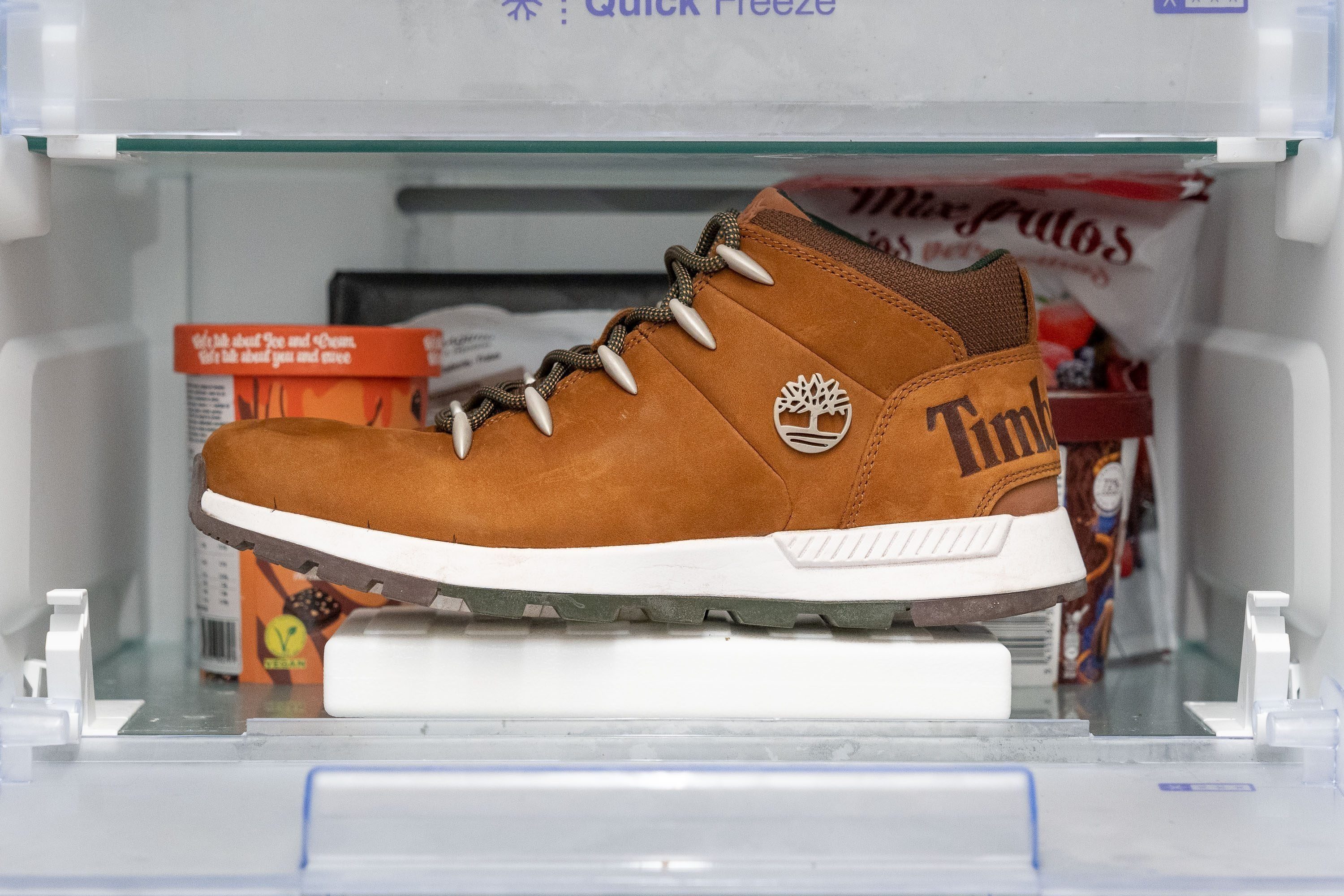
Then, we repeat the a) flexibility test, and b) midsole softness test. This tells us how much the boot stiffens up and firms up in cold weather. See below the hiking boots sorted by the smallest change in flexibility.
Harsh terrain asks for the highest durability
If you know you will hike over very harsh terrain and you want hiking boots that are super protective, we recommend looking for the most durable boots. In our lab tests, durability is assessed based on how much damage we’re able to make on 3 different parts of the boot.
Doing the Dremel test on the toebox of hiking boots
We make this damage using a Dremel. All our tests are standardized, so we always use a) the same RPM, b) the same pressure, and c) the same period of time (how much the test lasts). When we make a dent on the toe box or on the heel counter, we assess the damage on a 1-5 scale, where 1 is the least durable.
Doing the durability test on the heel counter in RunRepeat lab
However, when we press the Dremel against the outsole, we’re able to use the tire tread gauge and to measure exactly how deep the dent is.
Testing the durability of the outsole in hiking boots with a Dremel
The deeper the dent, the less durable the outsole rubber!
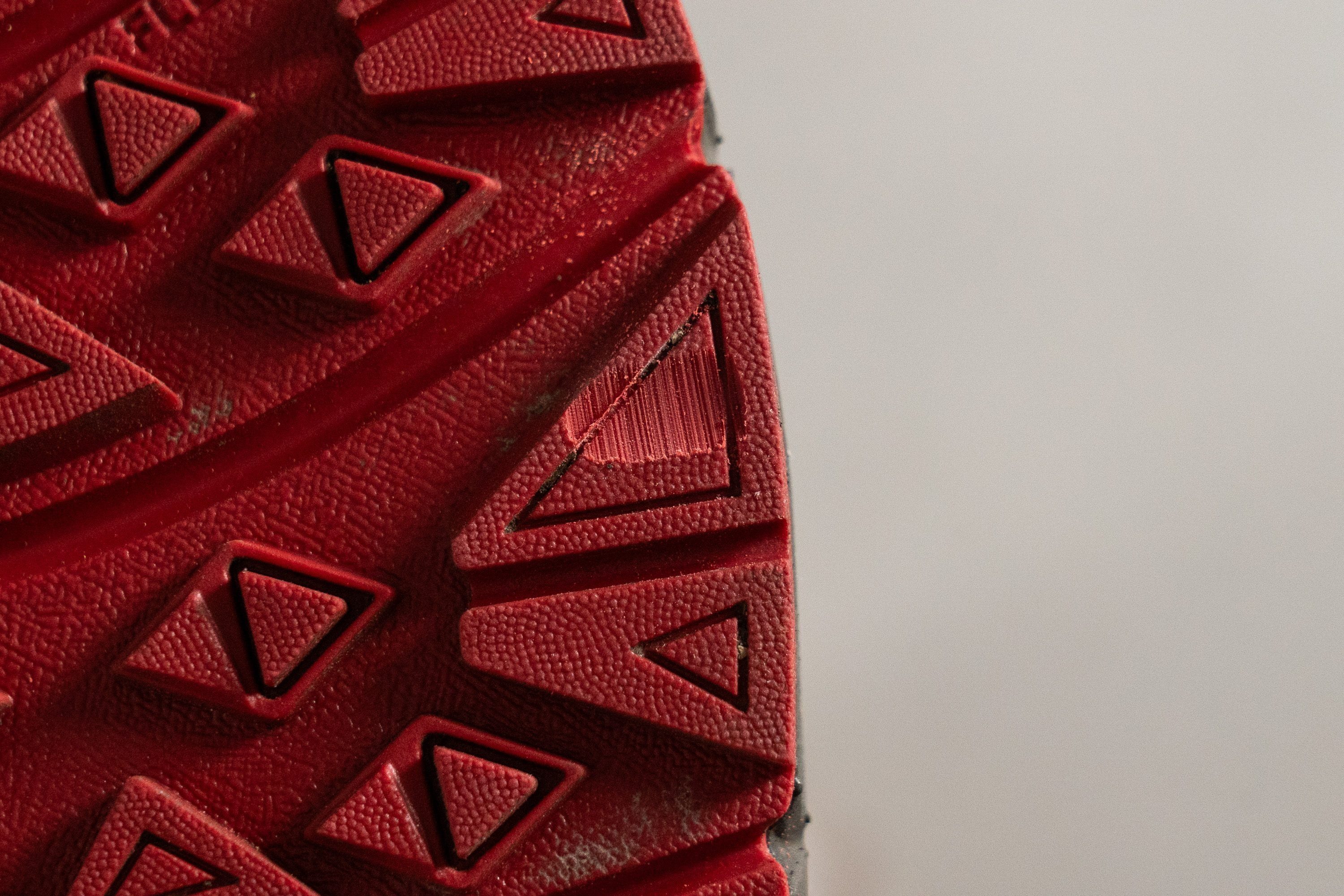
Lightweight vs. heavy hiking boots
We consider hiking boots lightweight when they weigh less than 17.6 oz or 500g.
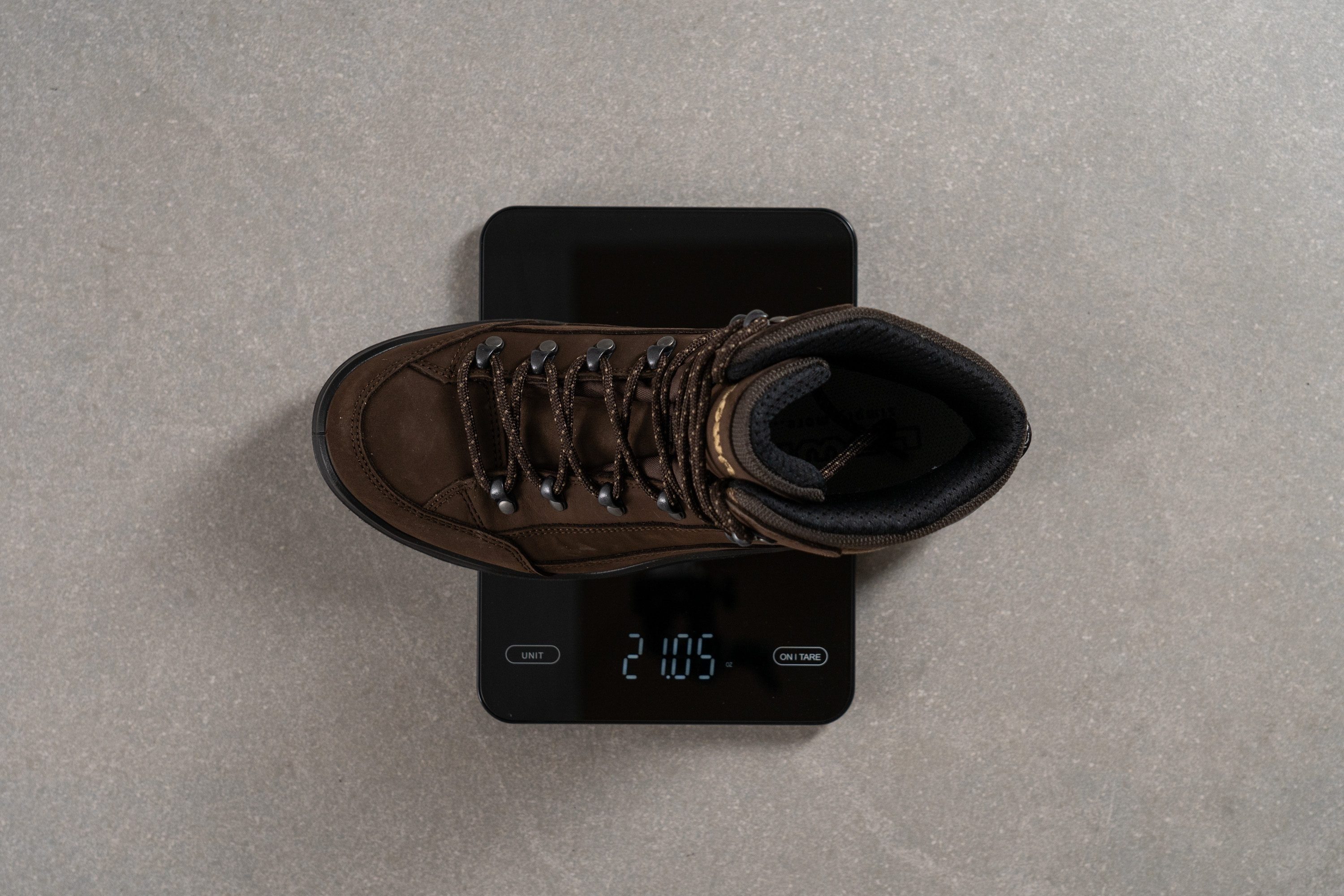
We measure every boot that comes into our lab on the same scale and in men’s size 9 (US).
Heavy hiking boots are heavier because they usually offer more protection, stability, and are able to endure more abuse. We recommend using heavy hiking boots on more demanding endeavors.
Lightweight hiking boots are better for easier routes, when you don’t need as much stability, or when you plan to do fast and light hiking. This means light backpack, light boots and covering the ground at a rather higher pace.
Waterproof hiking boots: what, when and why
Use waterproof hiking boots when you know you’ll spend time in wet weather, rain, snow.
Hiking in waterproof boots (Salomon X Ultra GTX Mid)
Don’t use them for dry and warm weather because they don’t breathe well (or almost at all) and because they are pricier: you will be paying extra for something you don’t even need.
If in doubt, you can always opt for water resistant or water repellent - they might work for light rain or morning dew. Here’s how the 3 are different:
| Water-resistant | Water-repellent | Waterproof | |
| General characteristics | a tightly woven fabric that is naturally capable of resisting water upon contact | fabric treated with durable water-repellent (DWR) or hydrophobic chemicals | -fabric treated with DWR -have waterproofing membranes like Gore-Tex and OutDry -have seam-sealed construction for extra protection |
| Water protection level | low water protection | moderate water protection | high water protection |
| Water pressure resistance | 0-5000 mm (no pressure or moisture) | 6000-10000 mm (light pressure) | 10000-20000 mm (high to very high pressure) |
| Weather conditions best used in | light rain shower and dry snow | light rain and average snow | moderate to heavy rain and average to wet snow |
Another thing worth noting is the tongue gusset. When the tongue is fully gusseted, it is connected to the sides of the boot under the eyelets. This additionally prevents water/snow/debris from getting into the boot.

When tongue is "free", meaning it has no gussets and no connection to the sides, it is more likely the debris and other things will get inside the boot.
Wide-feet friendly hiking boots
We all know the struggle when you have wide(r) feet and don’t know whether the boots are wide enough for you. Fortunately, we've made a special gel in our lab that perfectly fills the interiors of the hiking boots and, once frozen, is easy to measure.
Pouring the gel into the hiking boots to make the gel mold
Once the gel has frozen and we get a gel mold, we measure the 2 widths: of the shoe and of the toebox.
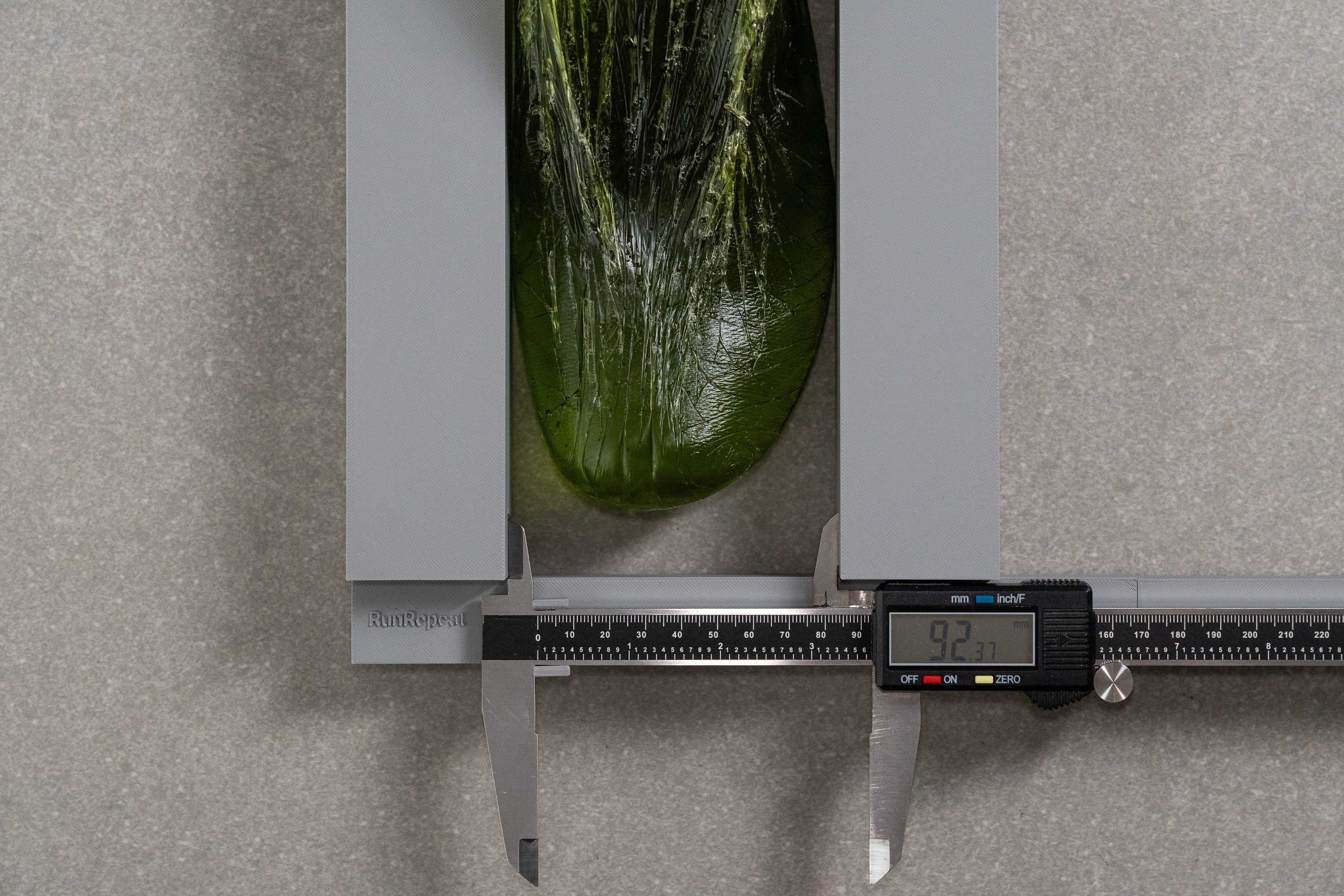
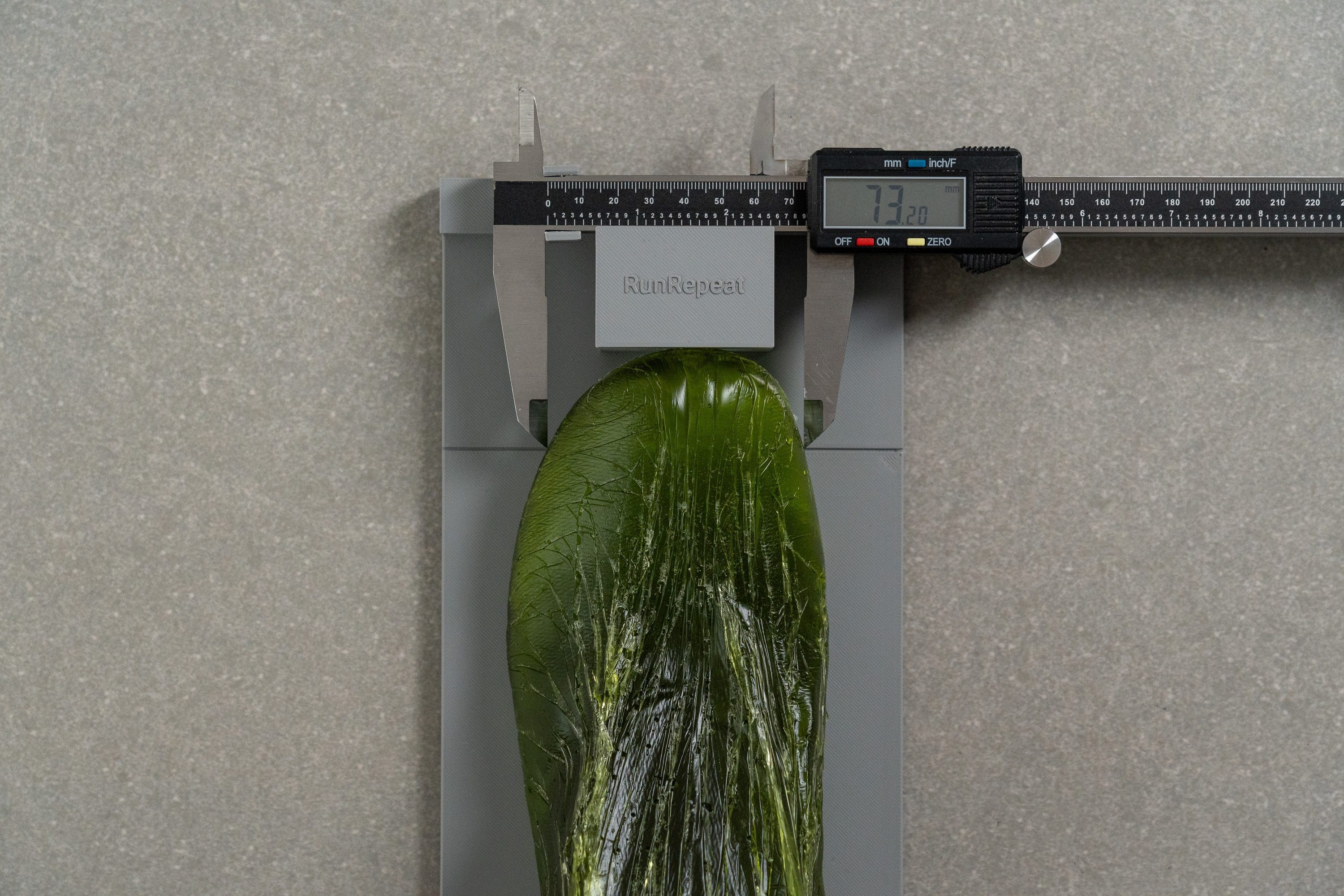
Knowing both widths is very practical because it allows hikers to understand which toebox will work best for their shape of feet:
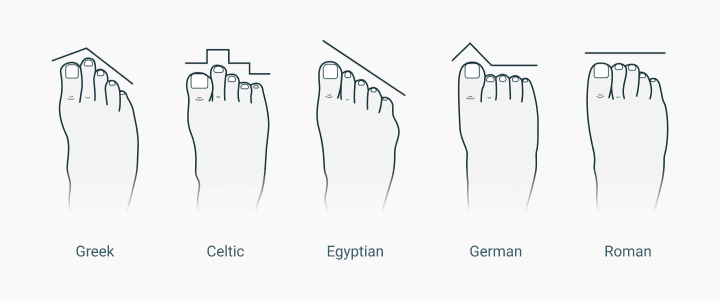
Having both width measurements allows us to assess how much the toe box tapers, whether it's pointy to better accommodate Greek style, or wider so that other types of toes can enjoy it.
Many hikers with wide forefoot also need more vertical room. Not necessarily because their big toe is pointing up but because they have more voluminous feet. Because of this, we cut the gel in half and measure the height of the toebox.

We test hiking boots in men's US 9, regular (D) width.
Bonus tips: 3 important features to look for in hiking boots
If you’re very much into hiking, here are 3 more things you should pay attention to when it comes to hiking boots:
- Are your hiking boots crampon compatible? This will matter once the terrain asks for crampons - usually when it is very icy and snowy. Usually, mountaineering boots are crampon compatible. This compatibility is usually given by the manufacturer. Boots can be B1, B2 or B3 graded and, therefore, compatible with C1, C2 or C3 crampons.
- Is the lining/insole antimicrobial? Very important if you have sweaty feet. Check the specifications from the brand to find out.
- Can your boots be resoled? This is up to the manufacturer, so check with them. It’s convenient because such shoes can then last longer, as long as the upper is not damaged.
Get noticed in the dark!
Some hiking boots come with reflective elements that make them noticeable in the dark. If this is a feature you find important, make sure to look for it. In all our hiking boot reviews we make sure to note whether the shoe has them or not.
See here how Keen Targhee III Waterproof Mid shines in the dark
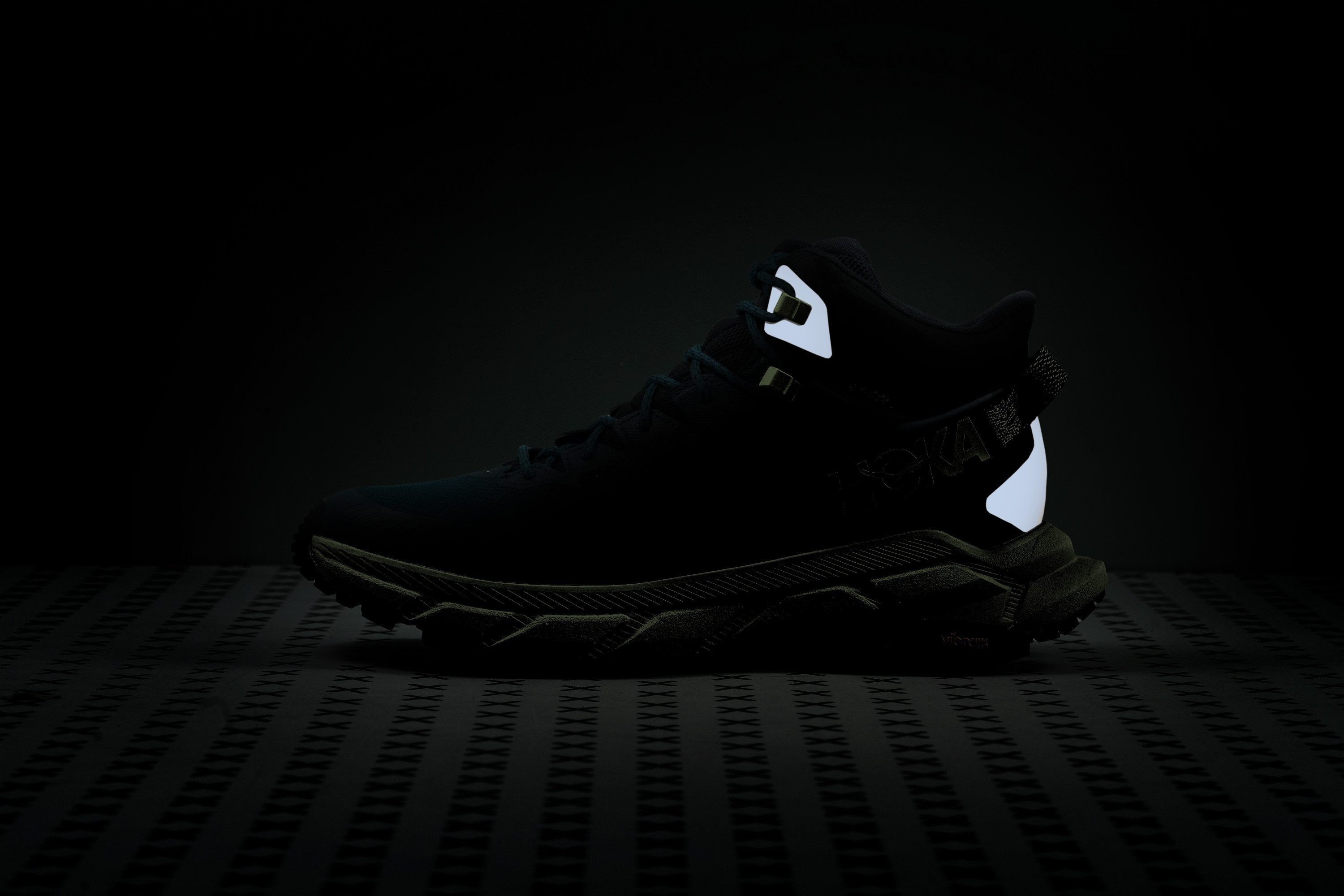
Above, you can see the reflective elements on Hoka Trail Code GTX.

